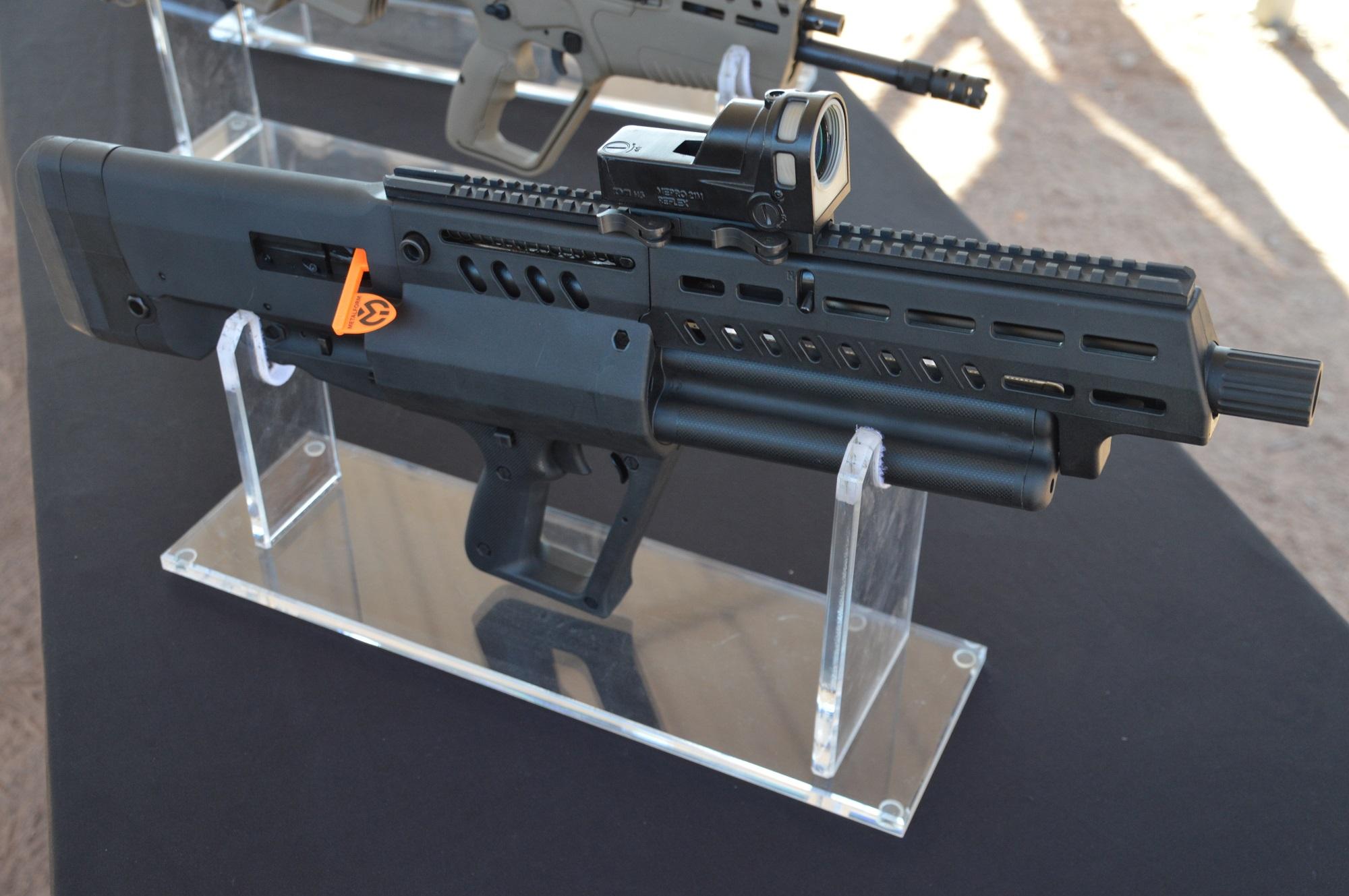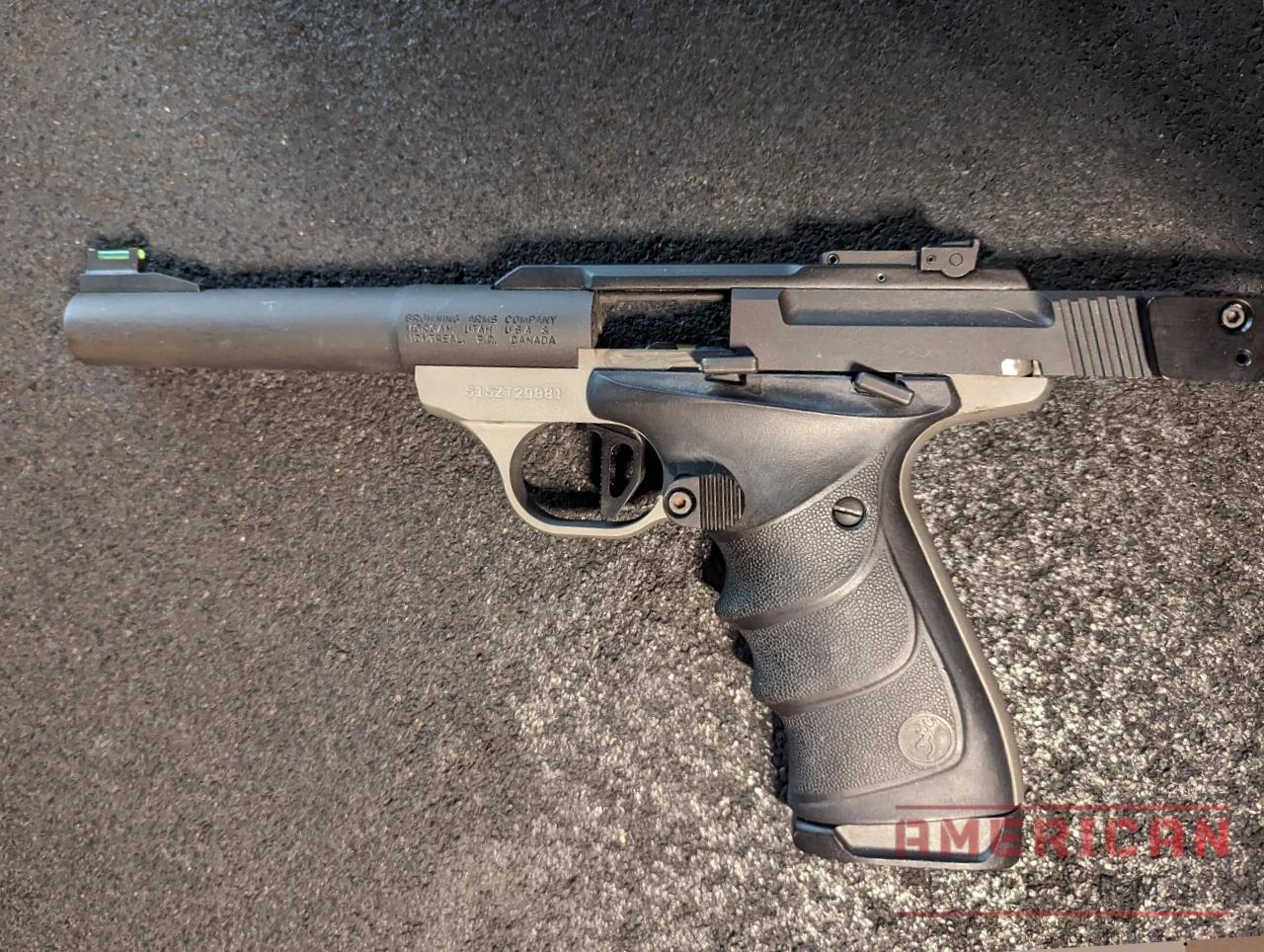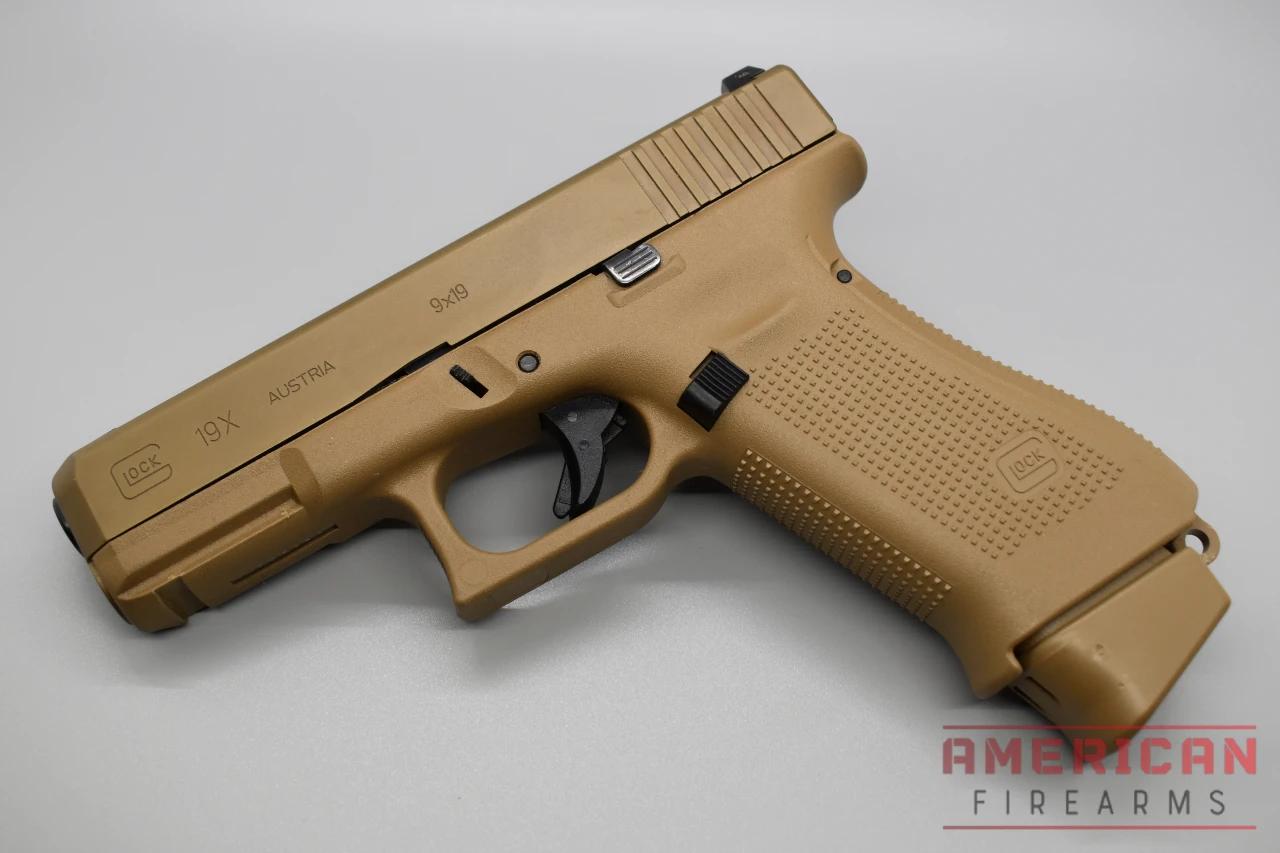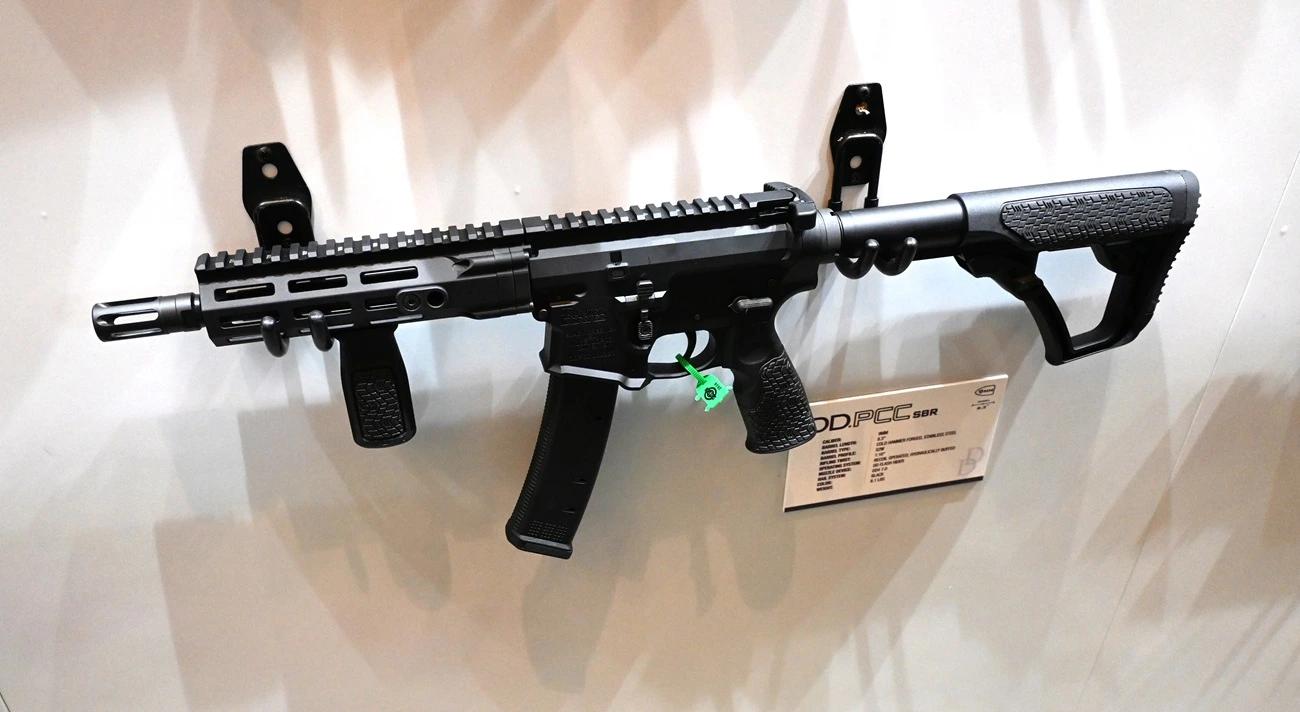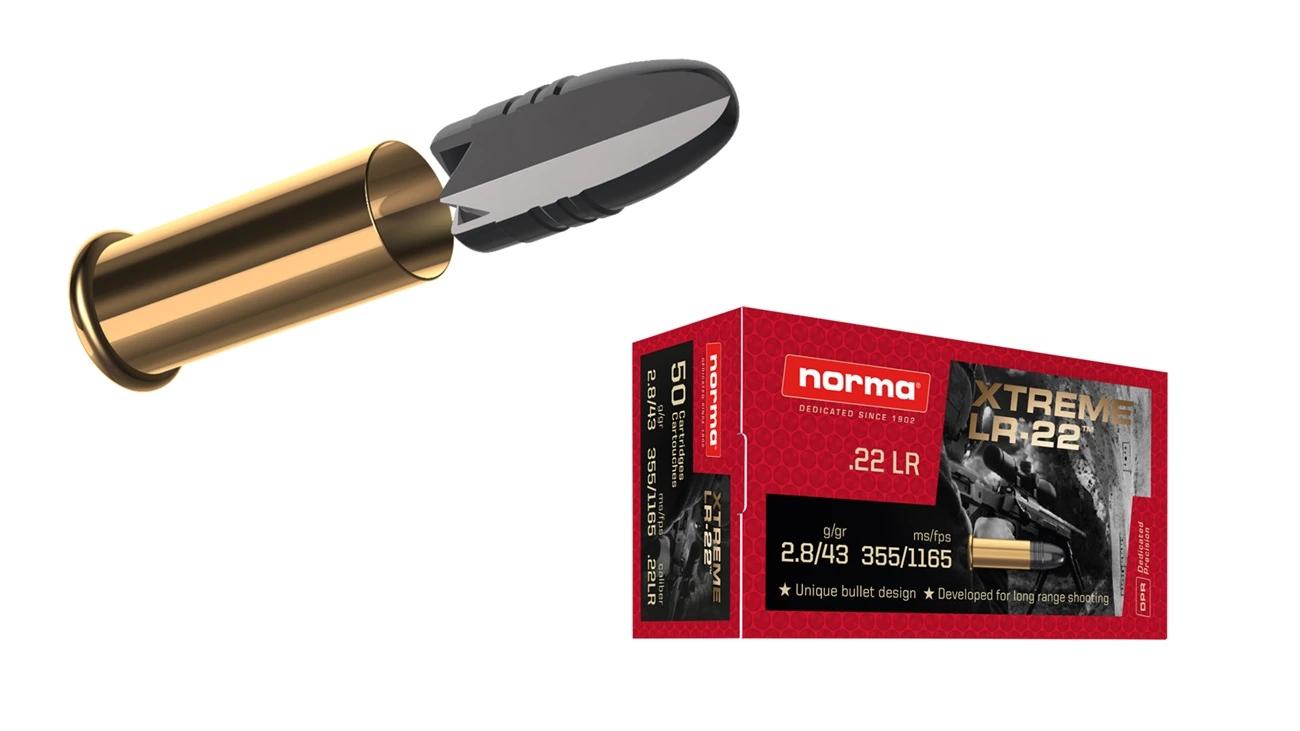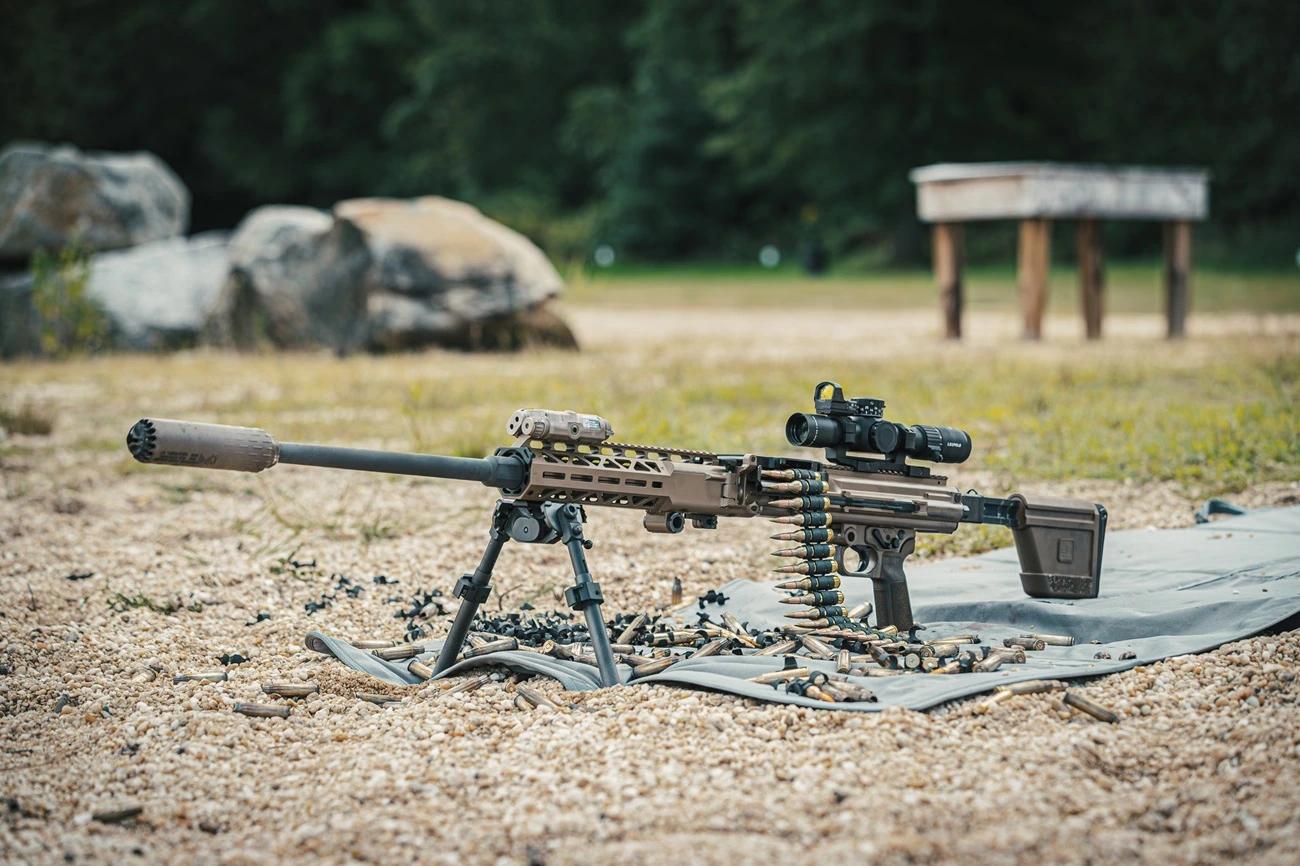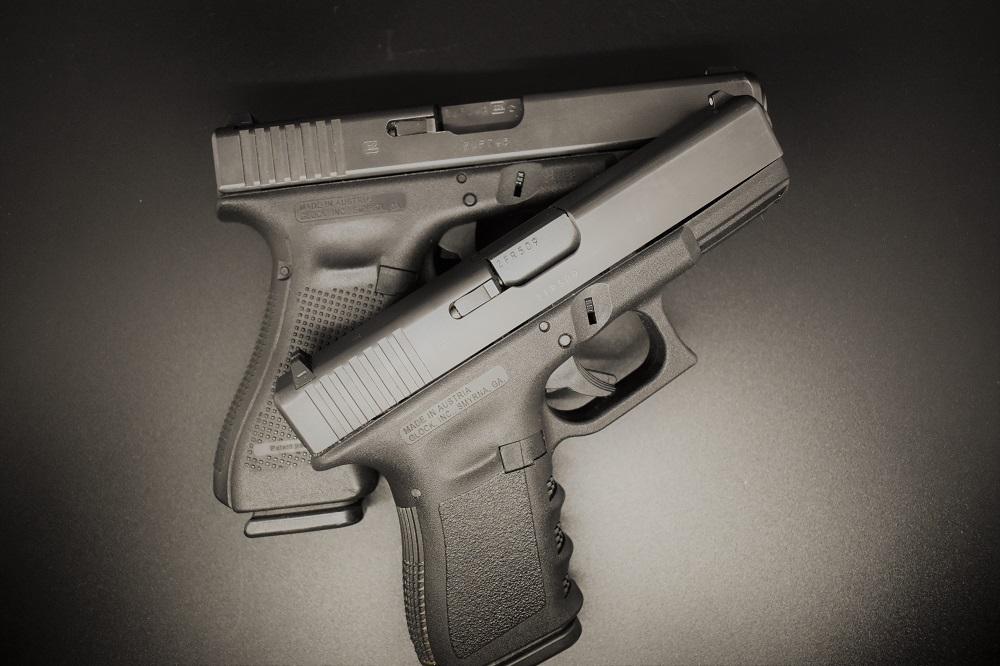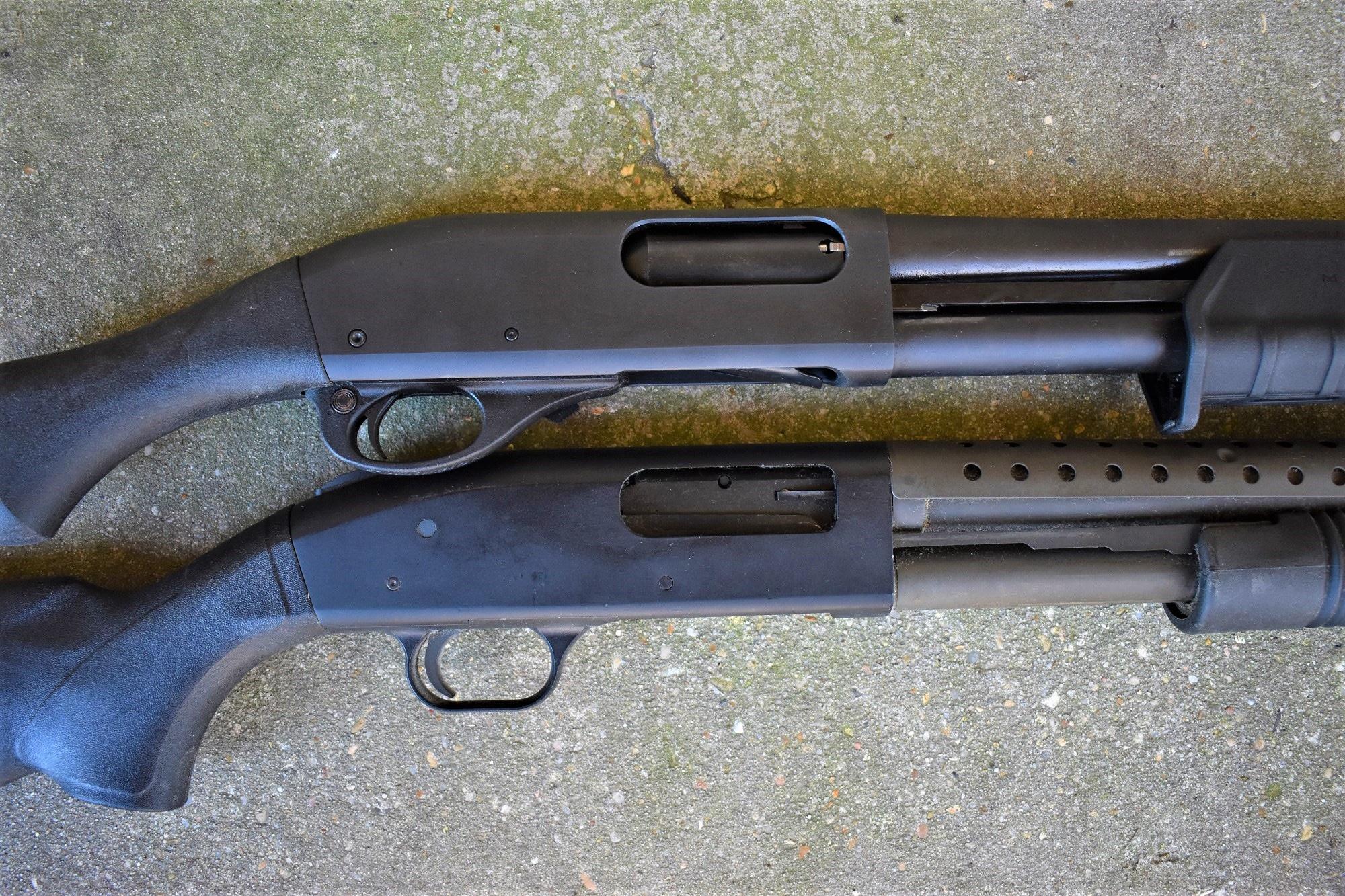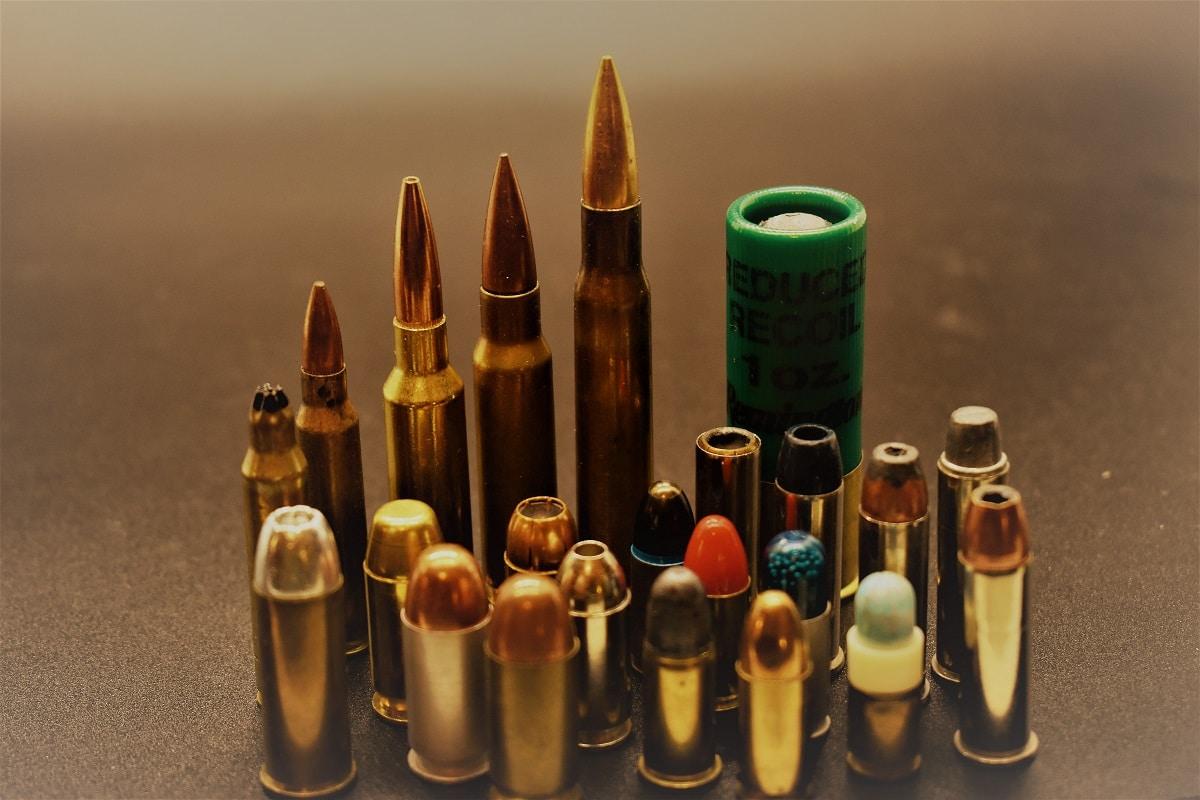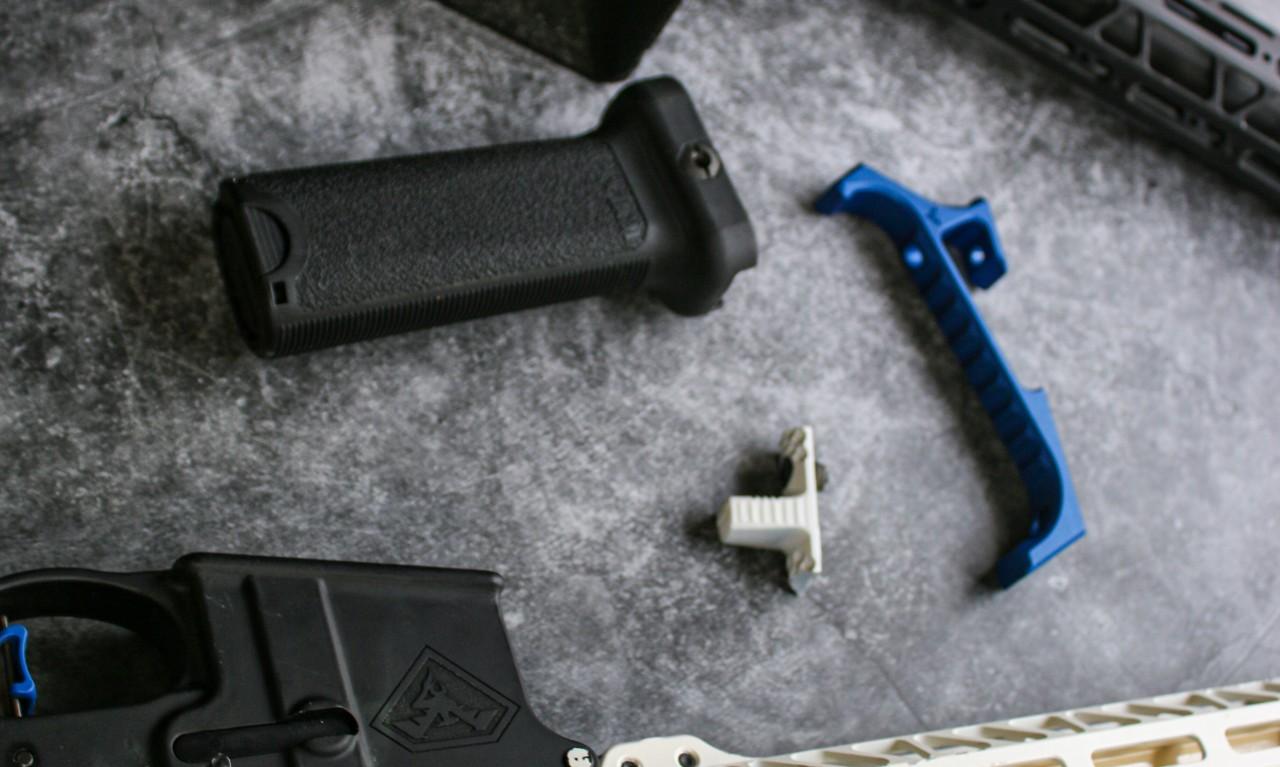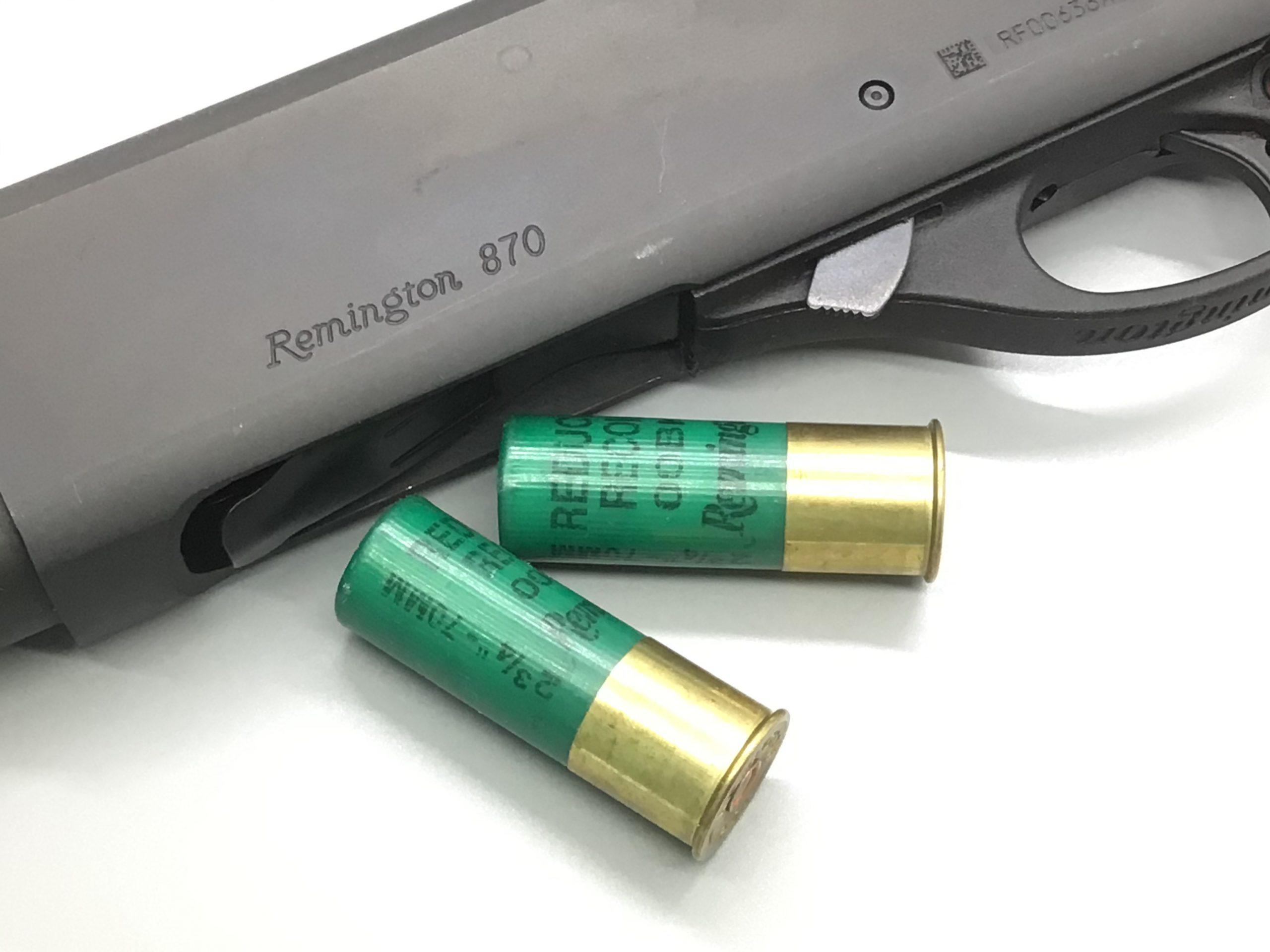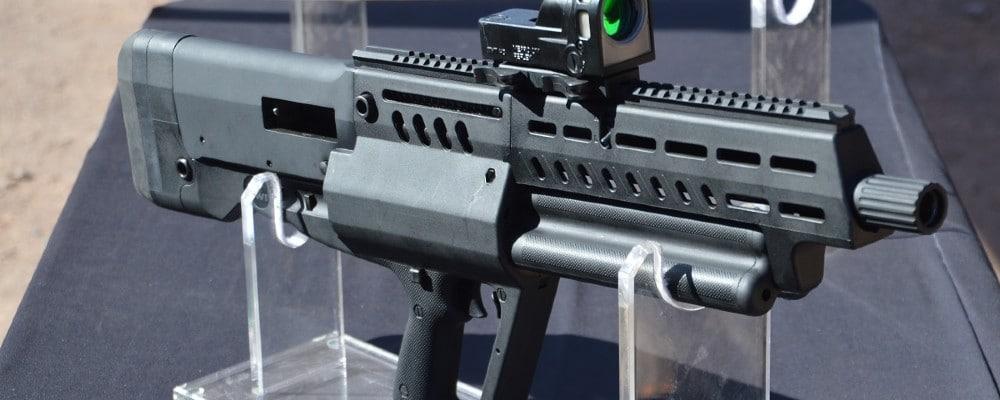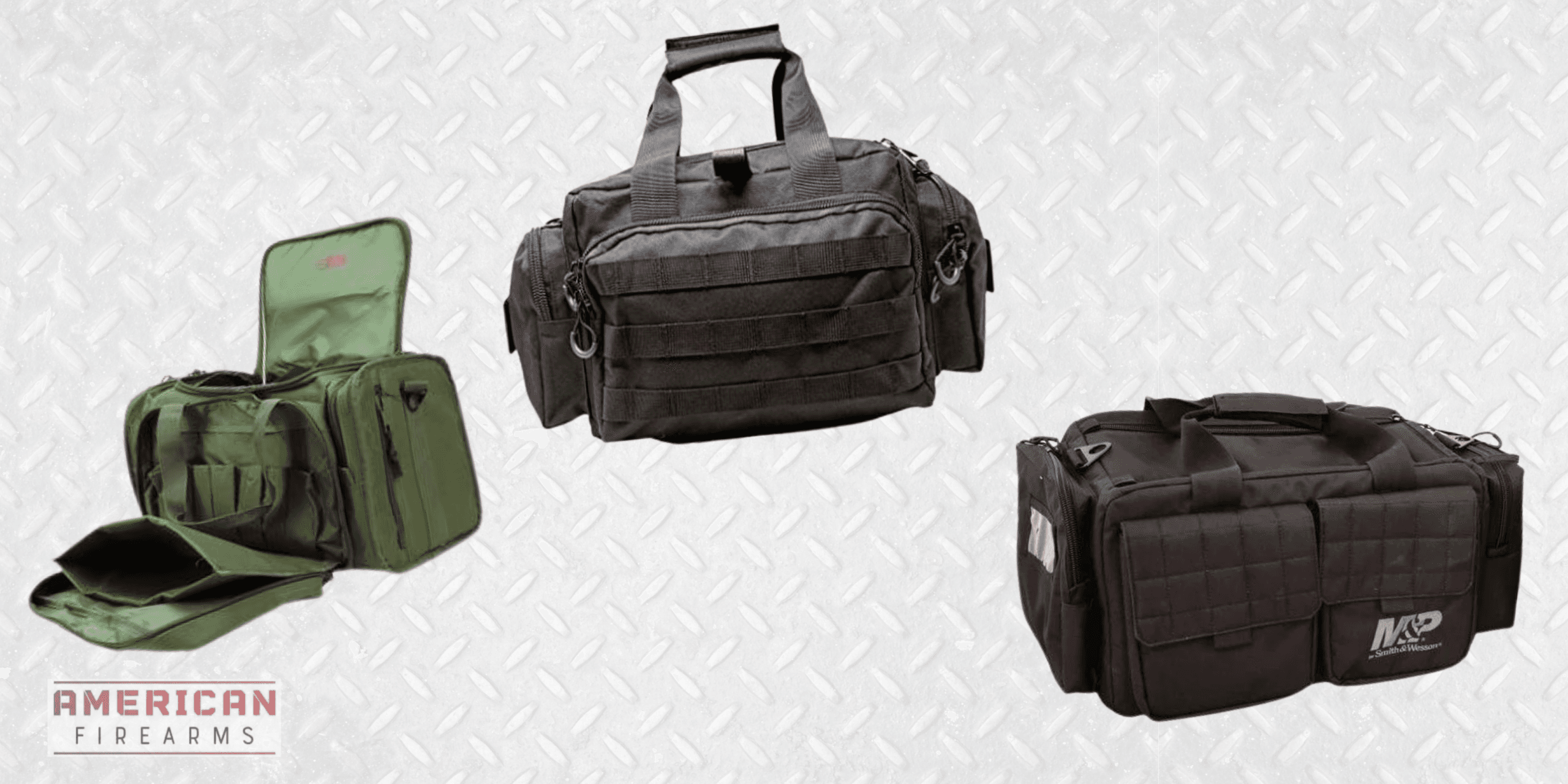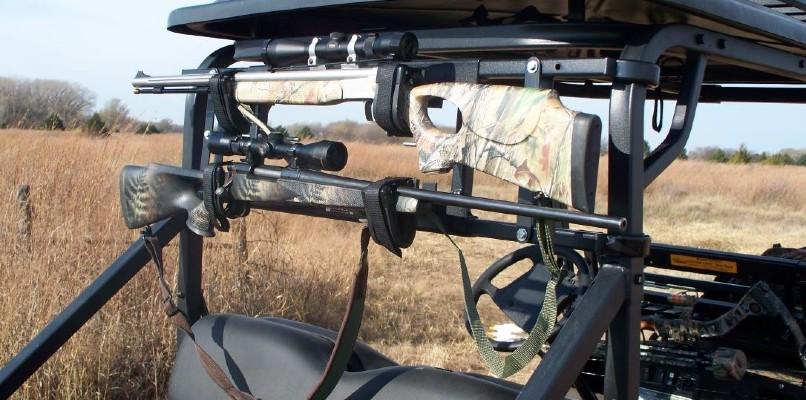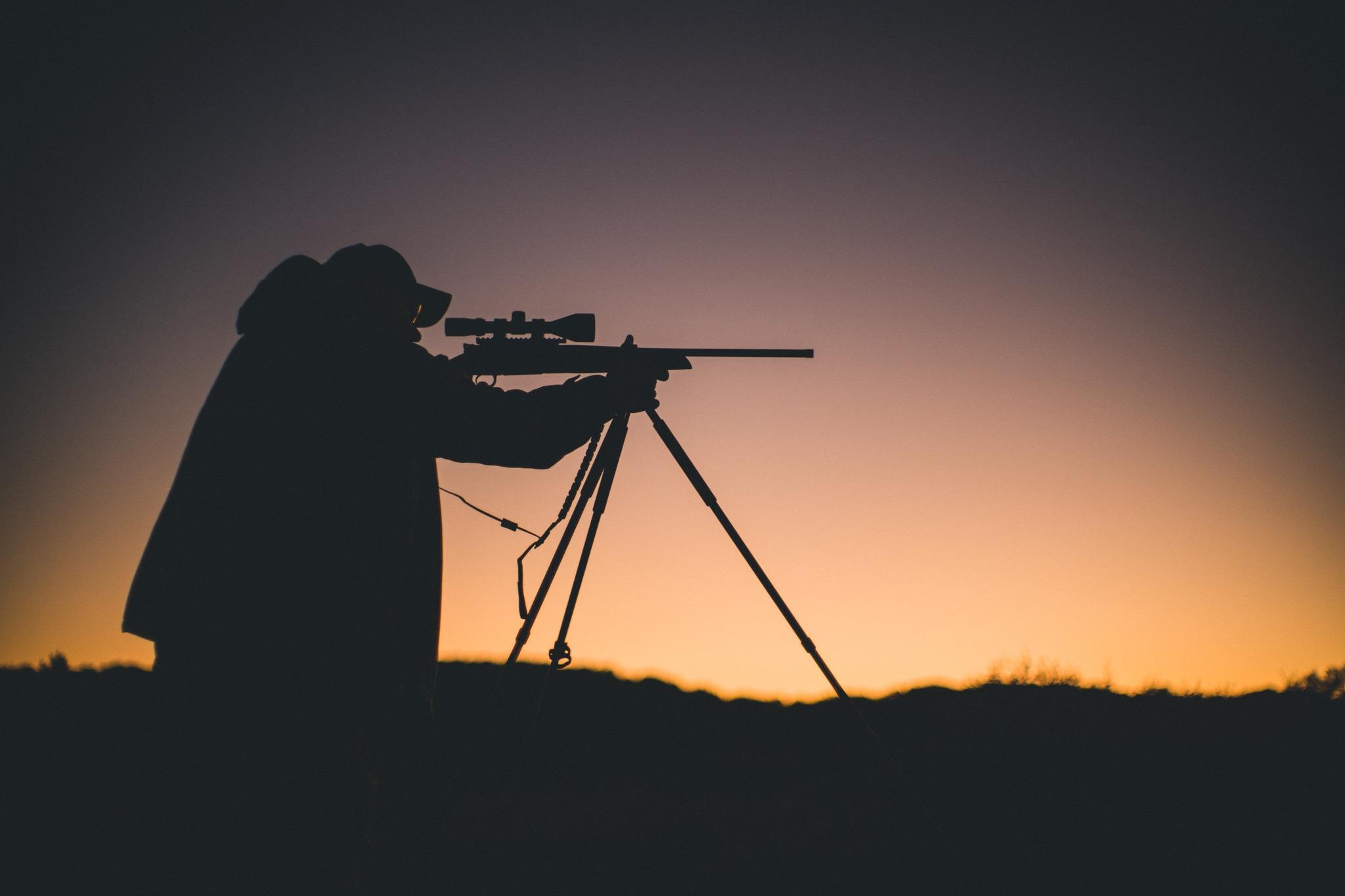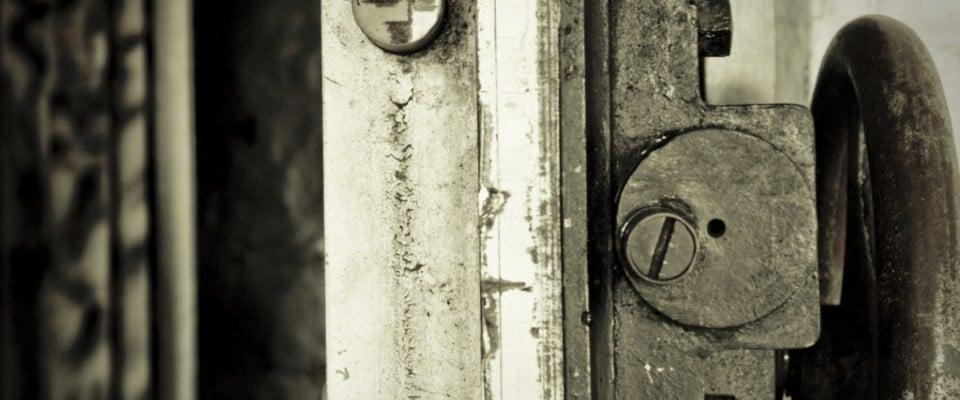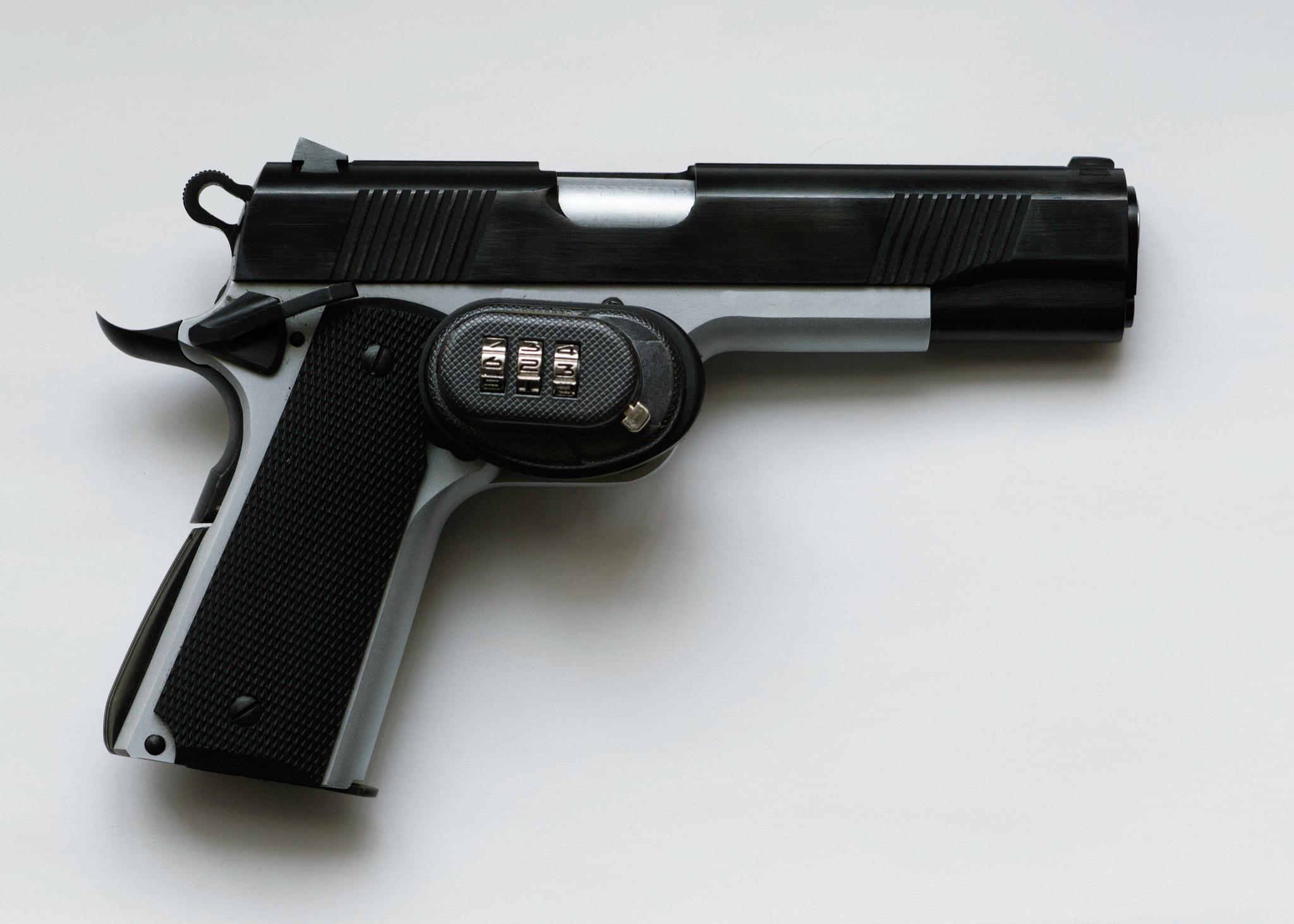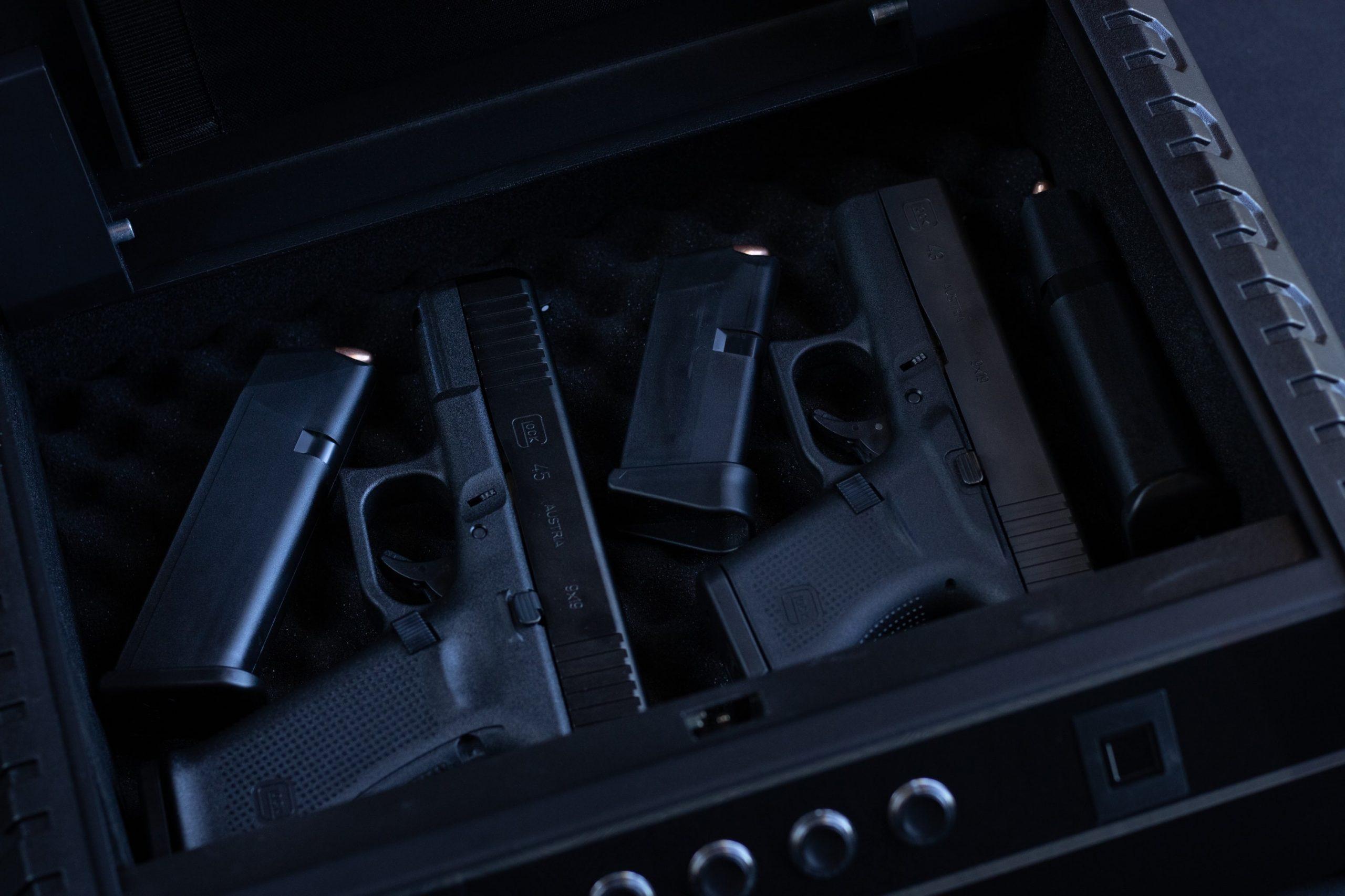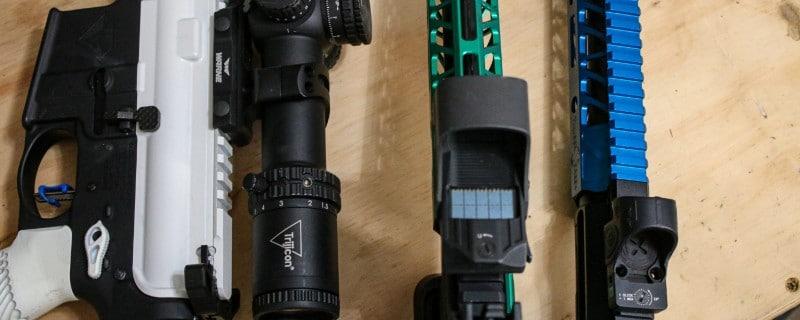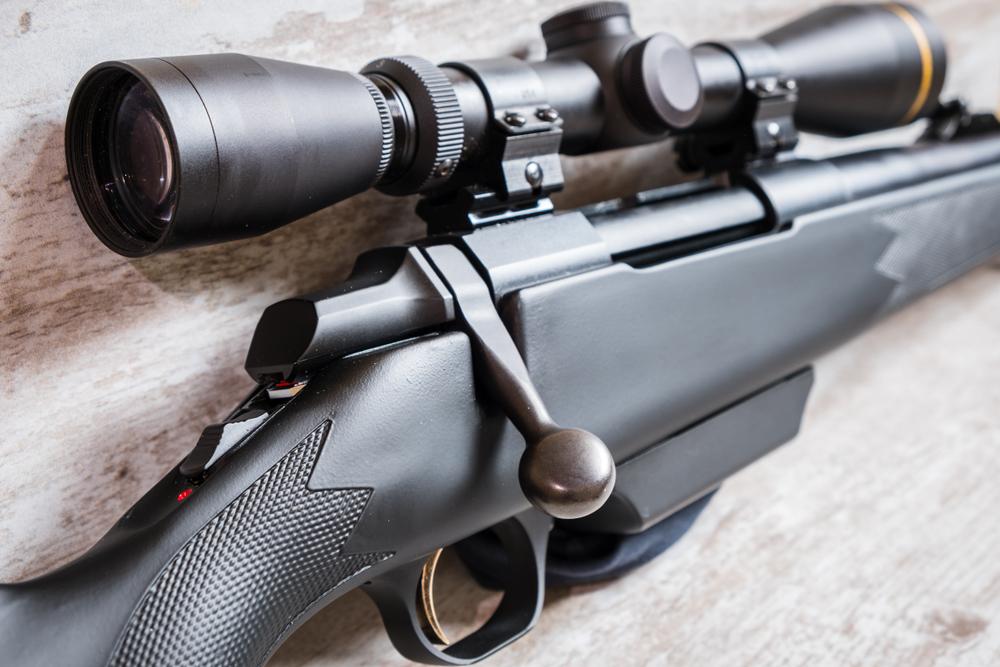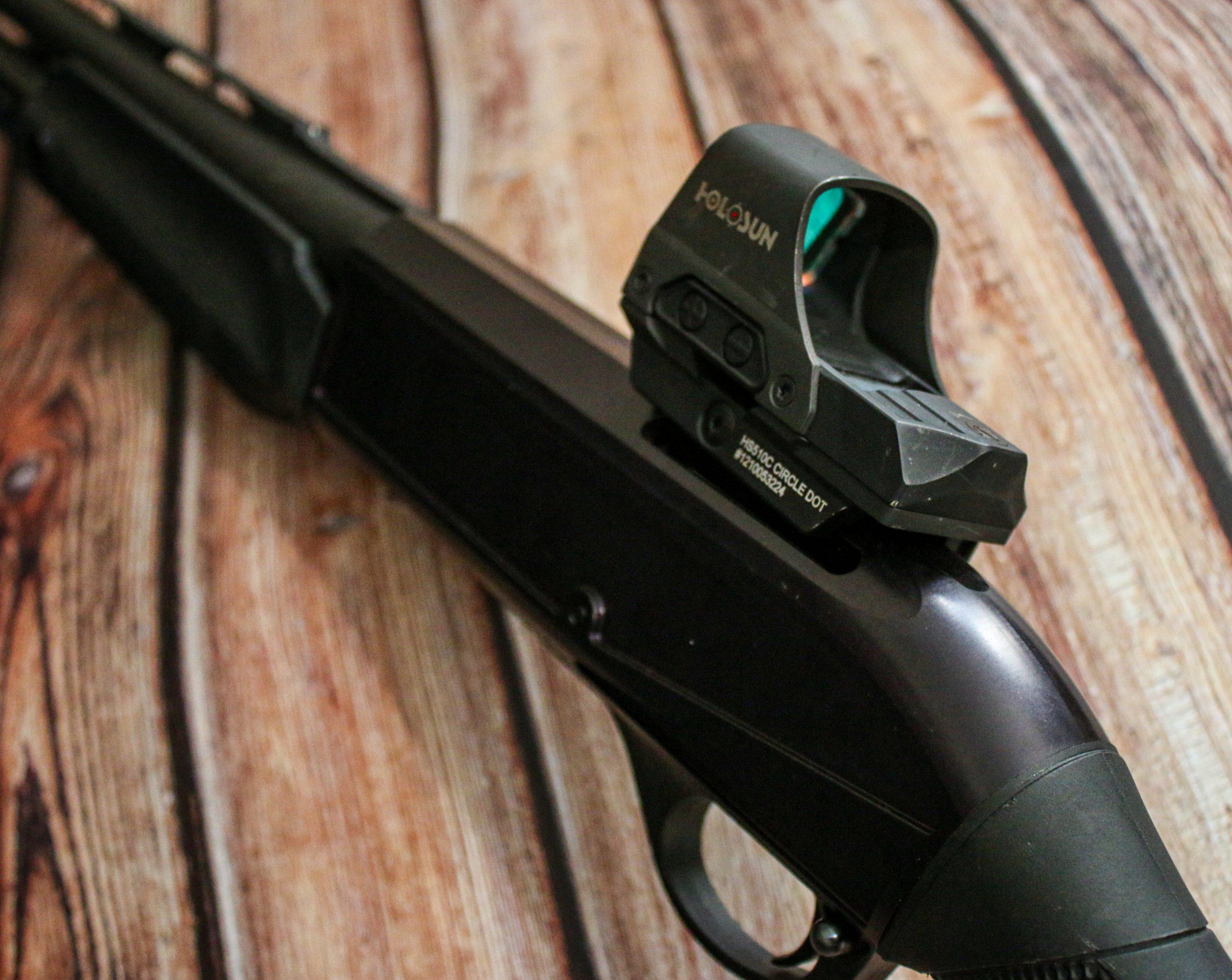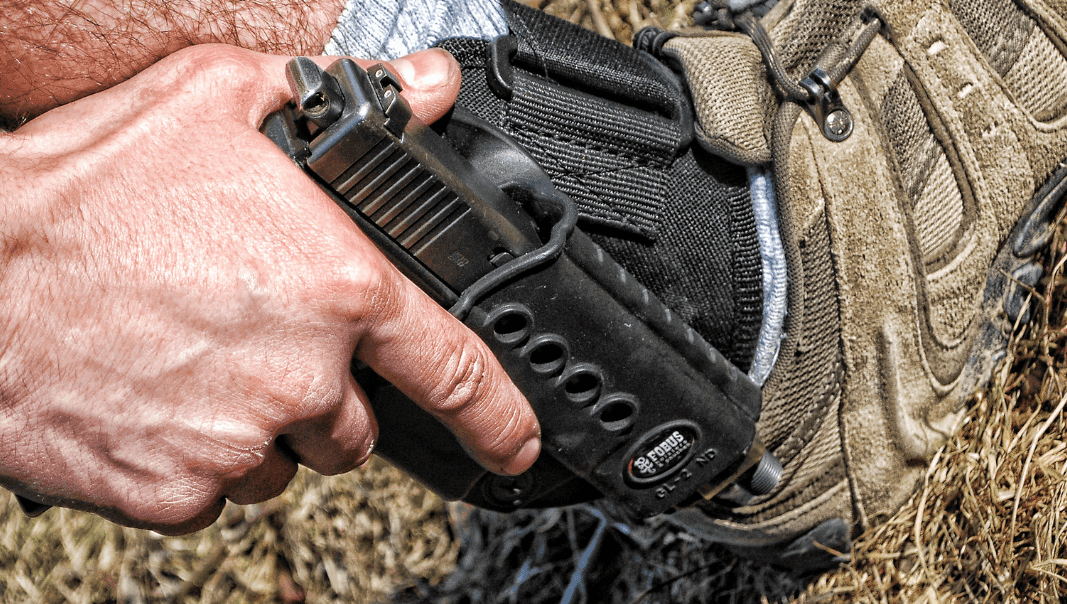What is the CMP?
Written By
Michael Crites
Licensed Concealed Carry Holder
Reviewed by
Editorial Team
Learn About The Editorial Team
Share:
Products are selected by our editors. We may earn a commission on purchases from a link. How we select gear.
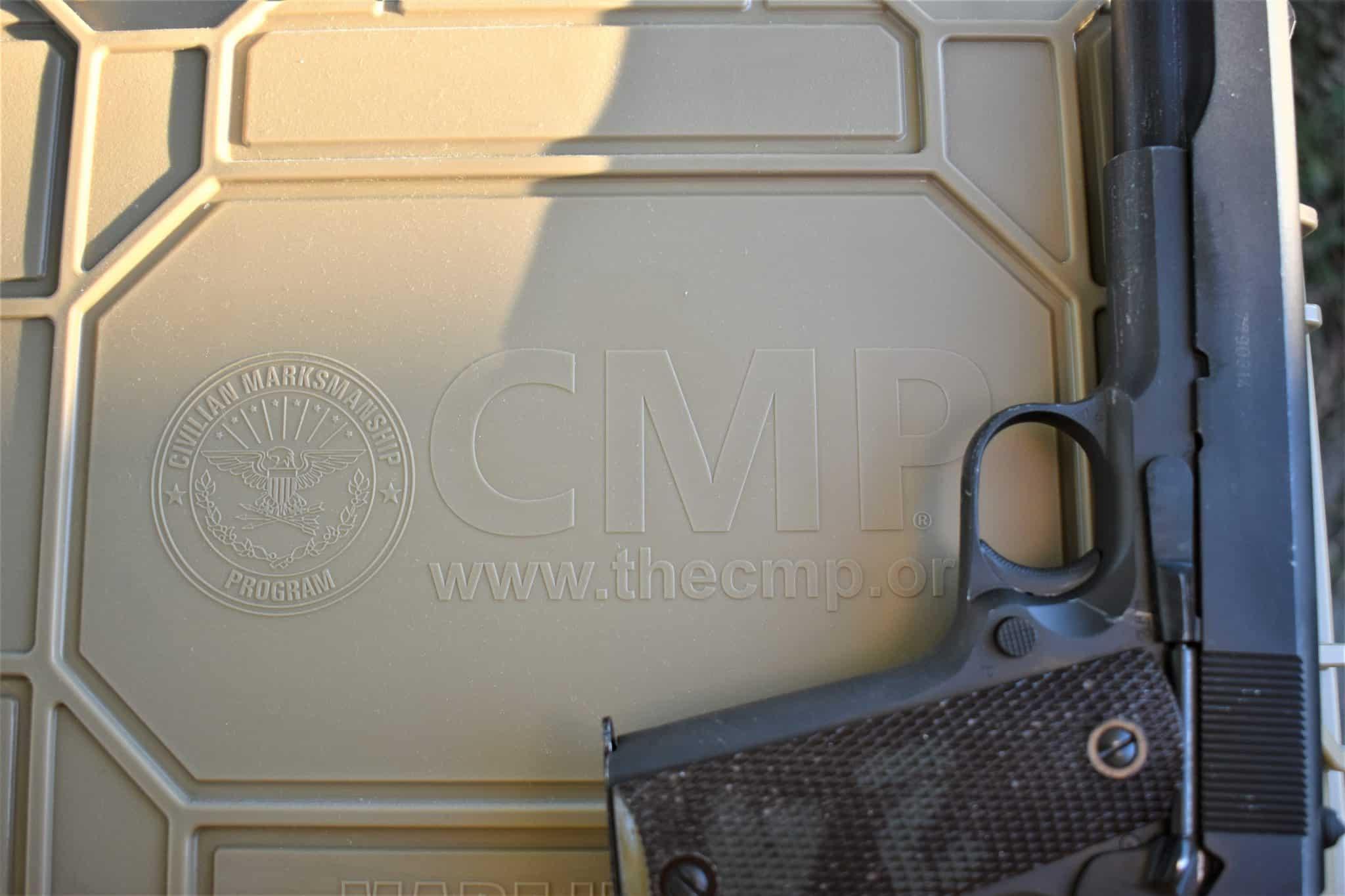
Updated
Jan 2023
The Civilian Marksmanship Program is a little-known government-chartered organization that aims to carefully cultivate youth firearms safety and training across the nation, and they fund it by selling Army surplus rifles and pistols to the public.
Here’s why they do it and how to get in on the program while it lasts.
In This Article
What is the CMP anyway?
With a lineage that dates to the board to promote marksmanship established in 1903 when Teddy Roosevelt was in office, today’s CMP is still centered on developing safe, first-class shooters, with an emphasis on youth. In this, they annually provide training to more than 80,000 individuals through various events and affiliated clubs.
“Our vision is that every youth in America has the opportunity to participate in firearm safety and marksmanship programs,” says the organization. “From hosting camps and clinics to offering scholarships and opportunities to advance and improve marksmanship skills, we’re working hard to fulfill our vision every day!”
Chartered by the federal government, the CMP is a not-for-profit, tax-exempt organization whose only tangible contribution from Uncle Sam since 1996 comes in the form of donated military surplus firearms such as World War II and Korean War-era M1 Garand rifles and M1911 .45 Government handguns.
A RAND report published by the GAO in 2018 compared CMP to 146 similar organizations around the country that promote marksmanship and concluded that none of those groups matched CMP in scale and breadth of function with the report citing, “CMP draws more participants in competitions than all the other organizations.”
Why was the CMP formed?
The U.S. Army today is, by most accounts not written in Chinese or Russian, the most modern and advanced in the world. However, that was not always the case.
Back in the 1890s, the 26,000-man force was scattered around the country in 80 small garrisons and was one of the smallest on the globe– Belgium could boast a larger military. Moreover, it had little depth in time of war. There was no Army Reserve as it would not be formed until 1908.
The National Guard, likewise, was not authorized by Congress until 1903. Instead, each state had its own local militia system dating back to the colonial era, which was very hit and miss– mostly miss– in terms of training and equipment. Even this force had to volunteer for federal service and then be hastily organized on the fly.
This led to an embarrassing showing in 1898 when it came time to mobilize 125,000 of these volunteers to augment the far-flung Army and take the field against the Spanish in Cuba and Puerto Rico during the Spanish American War. Further, the marksmanship of Spanish regulars, armed with top-of-the-line Mauser pattern bolt-action rifles firing smokeless cartridges, was often devastating compared to the American’s more dated Krag rifles and single-shot Springfield Trapdoor models, both fed with black powder ammo.
It turned out that less than half of the militia– which made up the bulk of the U.S. military– had received peacetime “target practice of any description.”
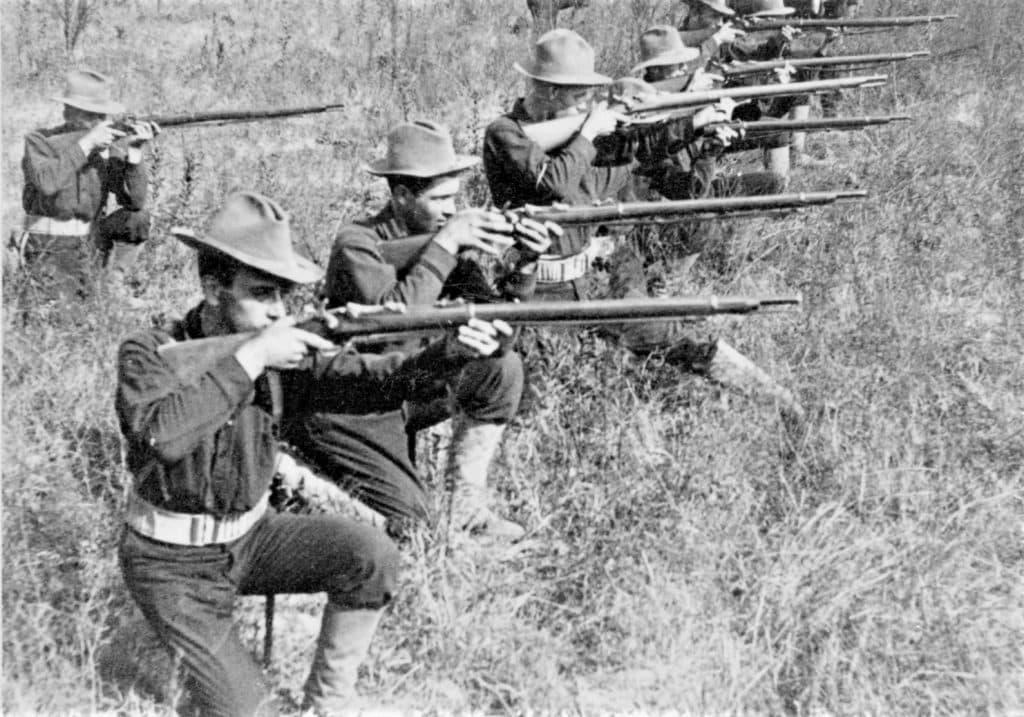
In the reckoning that came after the Spanish-American War, a new Mauser-pattern rifle (the Springfield M1903) was adopted, and the Army was greatly expanded. The Army Reserve and National Guard were formed to make standardization and mobilization to back up the regulars much easier, and a decision was made to enhance and promote military rifle marksmanship.
That latter task resulted in the National Board of the Promotion of Rifle Practice; a preparedness organization founded under the direction of Spanish-American War vet, President Theodore Roosevelt. The Board in 1903 moved to begin the National Matches, a military marksmanship competition for a national trophy held at Sea Girt, New Jersey.
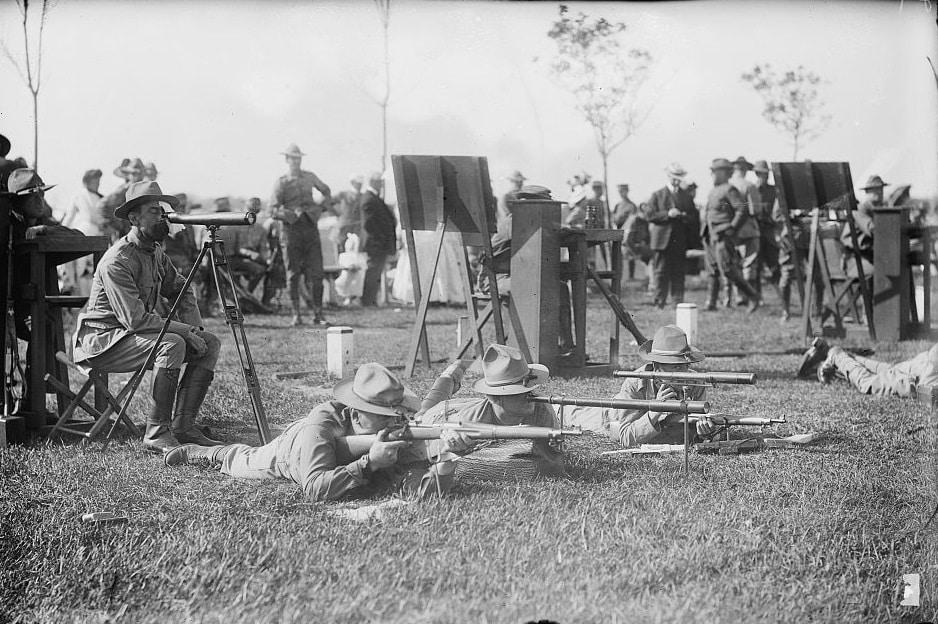
Two years later, the Board was authorized to sell surplus military rifles to rifle clubs around the country so that the pool of trained marksmen could be expanded outside of those wearing uniforms. By 1907, the enlarged National Matches were moved to a larger facility at the more centrally located Camp Perry, Ohio. In 1916, with the country again looking at entering a large war with a better-trained European power, the National Board of the Promotion of Rifle Practice morphed into the newly formed Director of Civilian Marksmanship or DCM.
The final version of the DCM was an Army-run, government-owned and financed operation, with the Pentagon giving it a shoestring $4.3 million annual budget. According to a 1990 GAO report, the group had just 36 employees but still managed to support 165,000 civilian shooters in 1,945 affiliated clubs nationwide. The DCM in 1989 sold 6,000 surplus M1 Garand Army rifles to affiliated club members, had another 24,000 assorted rifles loaned to the clubs themselves, and sold or donated some 37 million rounds of ammunition– almost all .22 rimfire– to its associated members and clubs.
It also supported 365,000 Boy Scouts via marksmanship programs, largely through the donation of ammo to their summer camps. Besides sponsoring 135 rifle and pistol matches around the country that year, the DCM also hosted 3,650 competitors at Camp Perry for the National Matches.
However, the Army felt the program was “of limited value” at a time when the post-Cold War defense budget was shrinking dramatically and the Clinton administration in 1996 ended the DCM, converting it into the CMP, with much the same mission but under a new format.
Is the CMP part of the Government?
By an act of Congress in 1996, the not-for-profit “Corporation for the Promotion of Rifle Practice and Firearms Safety” was chartered. As CPRPFS is one heck of a mouthful of an acronym, the organization simply goes by the more familiar and easier “Civilian Marksmanship Program,” or CMP, today.
Tax-exempt and with a board of directors as the governing body of the corporation, the government essentially privatized both the National Matches and the job of the old DCM. While other federally chartered non-profits oriented towards youth such as the Naval Sea Cadet Corps, the Civil Air Patrol, and Big Brother Big Sisters of America receive annual federal grants to help operate, CMP does not.
The only support the Army gives the CMP today is in the form of donated surplus rifles and pistols, which the corporation is allowed– in a practice that goes back to 1905– to sell to those affiliated with the group via approved marksmanship clubs. CMP even must reimburse the Army for things such as the inspection and shipping of firearms.
So, in short, today’s CMP is not part of the government, but they are government-chartered and regularly receive (some) guns that the Army deems surplus to its needs.
In exchange, the CMP must hold to the assorted Congressionally outlined public laws that govern its existence with a mission to promote firearm safety and marksmanship with an emphasis on youth. In addition, the organization is still subject to all applicable federal, state, and local laws when it comes to gun sales and transfers.
Marksmanship & Competition programs
The CMP sanctioned more than 2,078 matches across the nation for approximately 18,733 competitors in 2021 with the CMP Competition Tracker hosting over 150,000 visitors. Going past this, the organization sanctioned 228 state and regional Three-Position Air Rifle, or 3PAR, competitions for over 16,500 junior competitors last year alone.
According to the group, 3PAR is the most popular and fastest-growing form of shooting sports competition for junior shooters in the U.S. and it is a no-brainer for teaching the basics of riflery from Prone, Standing, and Kneeling positions. It was originally pioneered in the 1980s as the National Guard Junior Air Rifle Program as an alternative to smallbore position shooting, a sport that was being killed off due to the closure of ranges nationwide. Today, an estimated 250,000 youth actively participate in 3PAR, with most of those being through CMP and JROTC, a military youth program that the CMP supports.
While CMP sometimes charges token fees to individuals participating in marksmanship-related activities such as matches, youth camps, and competitions, the organization heavily subsidizes these through the funds raised via gun sales to make them accessible. For instance, between 2008 and 2017, CMP tallied $9.2 million in assorted fees from event participants but spent $95 million on the events themselves.
The CMP also has a scholarship program for student-athletes involved in the shooting sports. Last year, the CMP awarded 153, $1,000 scholarships to graduating seniors who participated in marksmanship activities along with a $5,000 scholarship to a top student and an extra $2K to the top fifteen awardees via the affiliated Garand Collector’s Association, bringing the total of $187,000 to outstanding junior marksmen.
National Matches
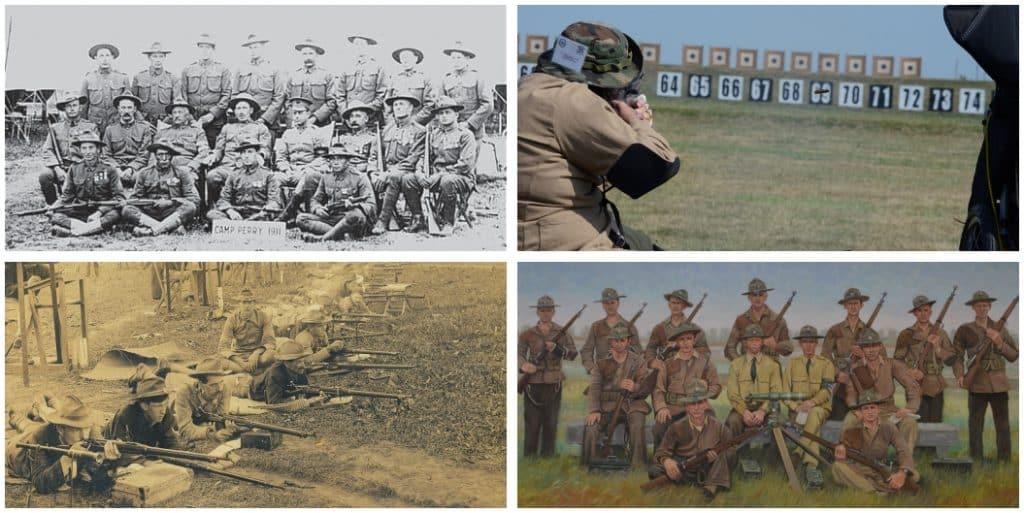
Established by a Congressional mandate in 1903, the CMP runs and takes considerable pride in promoting the iconic National Matches at Camp Perry, Ohio every summer.
The most recent NM included Service & Match Pistol, Service & Match Rifle, Vintage Rifles, Rimfire Sporter, Smallbore, and Air Gun events with no less than 4,365 competitors registered. If you are even semi-serious about rifle or pistol competition, Camp Perry is a mecca that absolutely must be experienced.
Also part of the event are several classes including the Small Arms Firing School, which was first authorized by Congress in 1920. The SAFS sees Army firearms instructors training civilians in the use of the M16/M4 platform.
Of course, volunteer civilian CMP instructors have also been there in the past to give support to the Army’s Squad Designated Marksman instructor courses, so it is all cyclical.
Marksmanship Parks
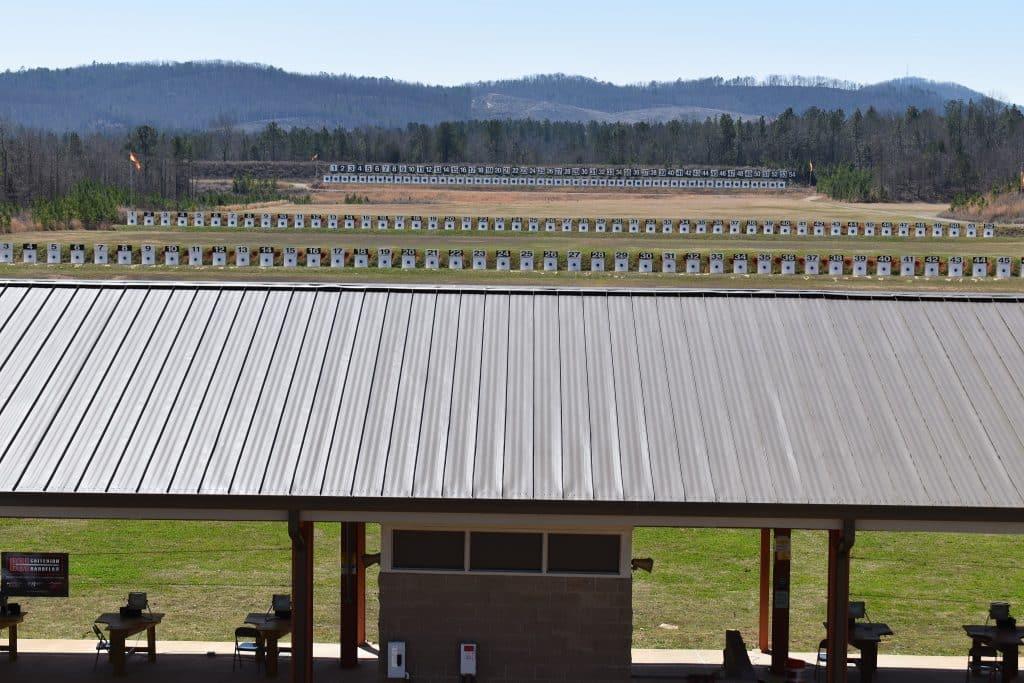
Besides its club affiliates and the National Matches during the summer, the CMP has moved to establish its own year-round marksmanship ranges. The largest and best known of these is the CMP’s “Home of Marksmanship, their 500-acre Talladega Marksmanship Park.
Located just behind the famous Nascar track in Alabama, the TMP welcomed over 16,000 daily users in 2021 alone in addition to more than 4,500 match competitors. In 2022, the TMP hosted the USPSA Nationals, the Talladega 600 match, a series of D-Day matches, and a regular 5K Range Run as well as more pedestrian concealed carry classes and other events.
Of course, the CMP also hosts a variety of events at its indoor range in Anniston, Alabama, principally 3PAR matches. Last year, the range hosted the Junior Olympics Final matches.
Newer to the game is the Petrarca Range at Camp Perry which was open for public use in the past couple of years.
JROTC
In furthering its original mission of imparting basic rifle training to youth, the CMP supports Army, Marine Corps, Navy, and Air Force Junior Reserve Officer Training marksmanship programs across the country. Centered in participating high schools from coast to coast, JROTC is the largest youth training and development program in the country, with more than 500,000 participating students. JROTC programs back as late as the 1980s and 90s included using 22LR bolt action target rifles once a week smallbore riflery practice.
This has morphed today to air rifles for a myriad of reasons and since 2005 the CMP has been responsible for training JROTC instructors and certifying JROTC ranges. Over 3,600 such instructors have been trained by CMP with almost 900 new instructors completing a JROTC Marksmanship Instructor Course or, JMIC, in 2021 alone.
Besides enduring daily support of the JROTC marksmanship program, CMP also holds the national postal competition and postal 3-position air rifle matches for the organization. During the 2020-2021 school year, 3,939 high-school-aged cadets participated in these competitions.
Over 660 student-athletes went on to participate in the 2021 JROTC 3PAR Championship.
Supporting Veteran Organizations
Ever been to a parade or event and seen an honor guard provided by a veterans group– you know, American Legion, VFW, and the like– armed with what seem to be real rifles? Well, yes, those typically are genuine military service rifles and not plastic facsimiles. The CMP, since 2003, is designated by the Army to be the go-to support for this through the Ceremonial Rifle Program.
Via the program, CMP takes M1 Garands that have seen better days, reworks them into a functional rifle with a good-looking stock, modifies them to function with .30-caliber blanks so that they can be used by firing parties at graveside and memorial events, then ships them out (on loan) to veteran, cemetery, or law enforcement groups that want them.
The CMP also supports these groups after the fact through inspection, repair and maintenance assistance. Since 2010 alone, CMP has produced and shipped out over 23,500 such rifles and has some 30,000 such Army-owned guns stored and ready to go for future needs, a program that has cost the marksmanship organization about $4 million since 2011.
The cost to the veterans’ groups? Nothing.
Why the appeal of a CMP gun?
While the CMP does re-sell some newly purchased smallbore and air guns—such as Hammerli AR20 air rifles, Air Venturi AV-46 air pistols, Savage FVT variants, and Anschutz .22s– via its club programs, it is individual sales of military surplus firearms that keep the program going.
The appeal of these veterans, which some deride as having to “jump through too many hoops” to get or being overpriced for “beat up old guns” is largely in the fact that they came right from military armories, and were passed to the CMP, then made available to the public.
In other words, they are about as legit as it gets.
Many who have lucked into getting a CMP-supplied M1 Garand or M1911 have traced their gun via Freedom of Information requests through the U.S. Army’s Materiel Command to further vouch for its travels up until it reached CMP.
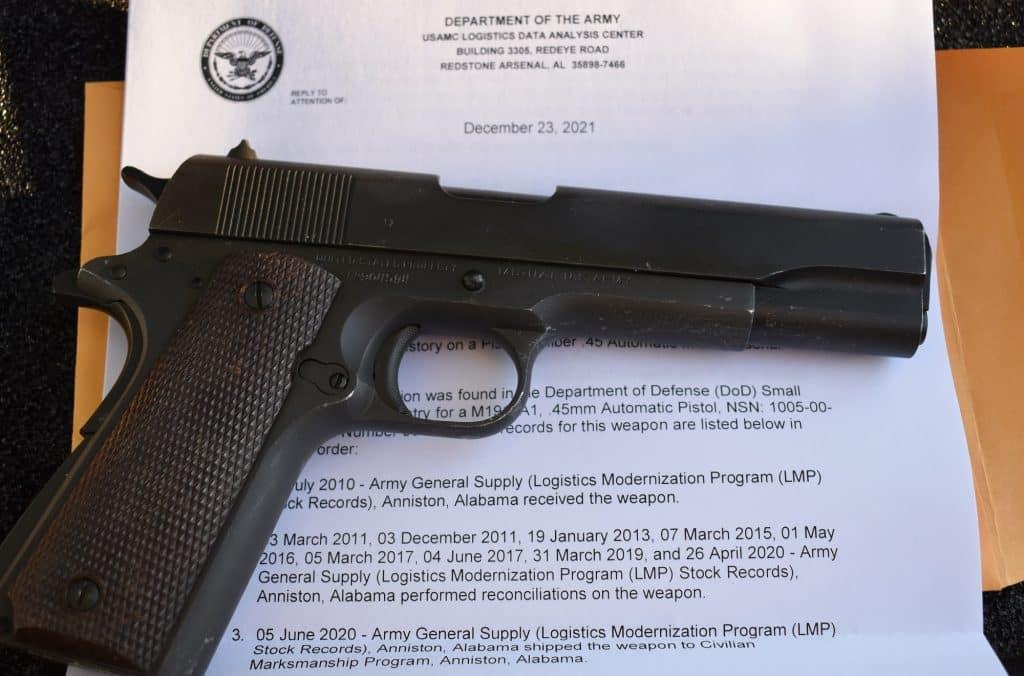
Another important consideration is that the CMP carefully inspects and test-fires the guns they send out to make sure they are complete, safe, and functional. If the new owner finds a problem with it, they will also work with them to try and fix it.
Further, in most cases, the CMP will only send out guns that have wholly GI parts except for “special/expert” grade rifles that have been rebuilt with the addition of commercial parts. That is something you just aren’t going to get in an old M1 that you find at a dealer, through an auction house, or on a gun show table where it is incredibly easy to buy pieces that may have been cobbled together from dozens of components of questionable sources which in the end may or may not work and may or may not be safe to fire.
The accompanying documentation on such hardware from CMP means, in terms of resale, these surplus war horses earn a premium over comparable firearms of the same grade, vintage, and manufacturer. Bottom line is that they are worth it from both a collecting and value standpoint.
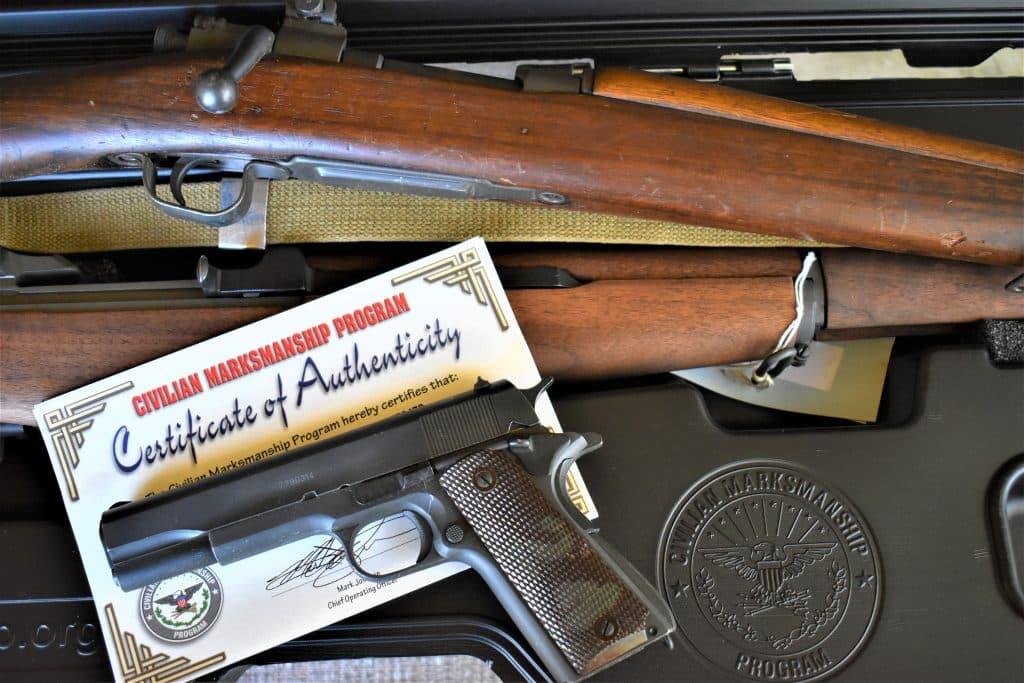
If you still don’t think a CMP M1 Garand is worth the squeeze, several companies sell M1s, although you may find their asking price for what you get to be a bit out of whack for guns that may be either shot out or extensively rebuilt. If curious, check out the Garands from National Match Armory, James River Armory, and Royal Tiger Imports with the latter typically being recently salvaged from Ethiopian military armories.
Where does CMP get its guns?
Authorized to sell surplus military rifles going back to 1905, today’s CMP has cycled through lots of them over the past almost 120 years, often in conjunction with the NRA as the latter had a ready membership and easy advertising muscle. This started with Spanish-American War surplus Trapdoor Springfields and Krag rifles, then after the Great War to M1917 U.S. pattern Enfields and American-made Mosin M91s that were produced for the Tsar of Russia but never delivered. By 1947, following the end of World War II, the NRA was selling DCM-supplied M1903 Springfields for $30 (used but “serviceable”) and $50 new, plus $1.85 packing and handling.
The NRA/DCM model continued into the 1960s when the M-1 Carbine became surplus following the adoption of the M16. This decade saw no less than 240,000 M1 Carbines decommissioned and sold to NRA members for $20 each ($17.50 plus $2.50 P&H).
advertising M1903A3s for $349 and the rifles largely became sold out by the turn of the century. By August 2008, looking back at internet archives from about when the CMP first went online (everything was mail order before then, and sales continue to be) Army surplus Mossberg M44 .22LR bolt action rifles were selling for $200, M1 Carbines from $419-$595 depending on grade, and Rack/Field/Service-grade M1 Garands from $445-595.
Besides the U.S. military’s stocks of rifles, typically taken from storage at the Army’s Anniston Army Depot, CMP has also managed to obtain shipments of “returns” repatriated back from loans to overseas allies. This means guns sent back from places like Denmark and Greece have appeared in recent years, complete with markings from those countries. Likewise, CMP was often able to acquire vintage but still very usable stocks of .30-06 and .30 Carbine ammo, bayonets, and slings held by those countries at very affordable prices.
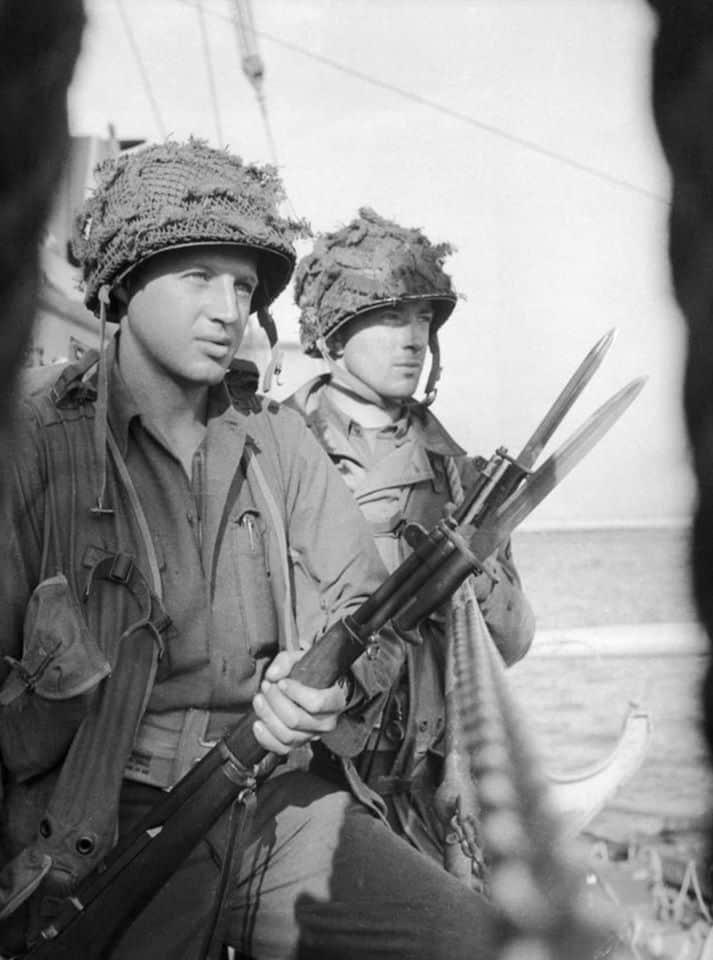
According to a GAO report, the Army transferred 279,032 surplus rifles to the CMP from fiscal years 2008 through 2017. Most of these (203,644) were M1 Garands while another 60,000 were non-functional drill or dummy rifles. Additionally, approximately 99,000 M1 rifles were recovered with the Army’s assistance from overseas allies in the Philippines and Turkey in early 2018 and shipped back to the U.S. with the CMP picking up all the costs.
The story of how the Philippine M1s got back “home” and into the CMP’s warehouses in Anniston is epic.
According to CMP, as of August 2018, it had approximately 148,714 sellable surplus rifles on hand– a figure unlikely to have grown further since then– and, between 2008 and 2017 had sold no less than 304,233 surplus rifles to club members at an average of about $650 per rifle.
While doing the math on that you come up with a figure of almost $200 million for those nine years alone, keep in mind that the funds obtained by the sales went to cover the $16 million annual budget of the organization and its marksmanship efforts while the “change” left over went to an endowment fund to enable it to carry on its work once the finite supply of mostly WWII-era guns is exhausted. After all, only so many were produced, and the war ended almost 80 years ago.
The CMP will likely be “sold out” of just about everything within the next decade barring the improbable passage of legislation to allow it to sell modified semi-auto-only M16s and M9 Berettas that are surplus to the Army’s needs but still in Uncle Sam’s arsenals.
M1 Garands
Today, the CMP’s stocks of M1 Garands are probably at their lowest in years. While the group has not disclosed how many guns it currently has on hand, the bulk of the rifles it has left is likely the remnants of the 86,000 assorted Garands that came from the Philippines in 2018.
Many of those guns had been stored in less than ideal conditions with some having stocks that were riddled with termites and others with metal that was rusted to the point of being non-serviceable.
That’s where the group’s grading and inspection process comes in.
Their skilled armorers will disassemble and closely examine the rifles according to a 29-point checklist that includes verifying the muzzle and throat gauges are within safe specs. Then, the gun will either be set aside — when it will be recycled into a blank-firing gun for the Ceremonial Rifle Program or as a “Special” or “Expert” grade rebuild — or repaired to sell, graded in one of four conditions: Rack (fair), Field (good), Service (very good), Correct/Excellent (all original with over 80 percent of the original finish remaining).
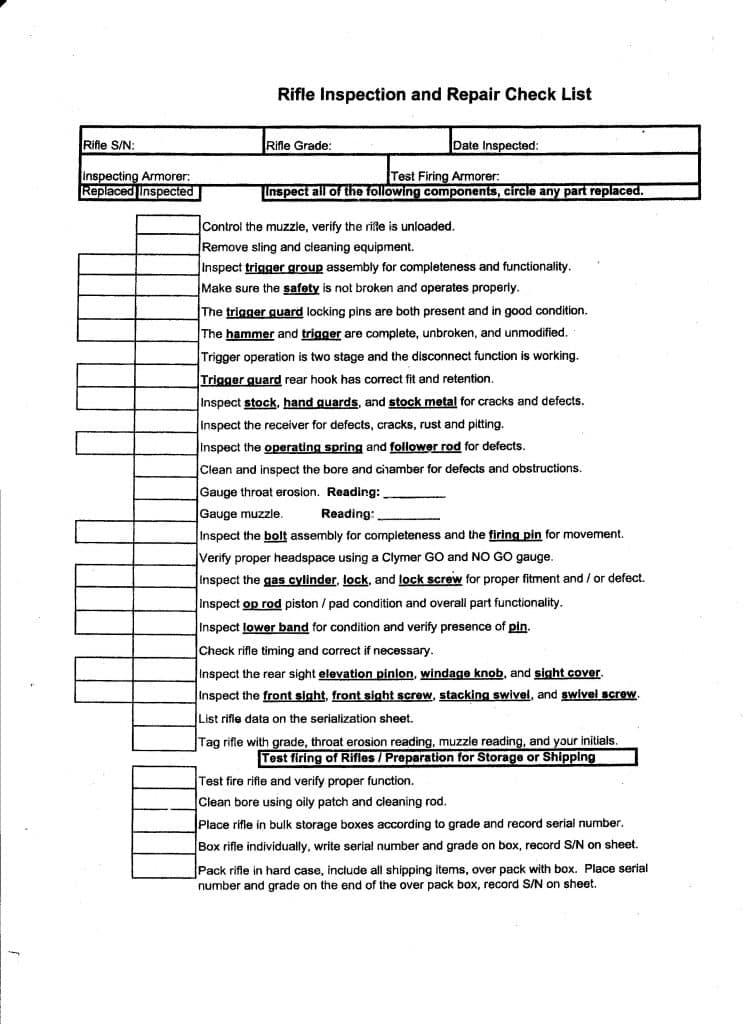
While they do encounter the occasional rare gem that is an almost untouched M1 that has been in arsenal storage since it left the factory, the CMP cautions that “Over the past 65 years, most M1 rifles have been arsenal rebuilt, refinished, re-barreled or repaired at least once and often several times. Most will show signs of service (often considerable) and replacement of various parts. They are seldom encountered with all original parts and original finish as delivered from the manufacturer.”
In late 2019, pro-shooter Jerry Miculek was able to tour CMP’s Anniston operation and saw some of the PI M1s in stock.
As of October 2022, CMP was only listing Rack grade M1 Garands with a 6-8 week delivery for $650 with free shipping with Field, Service, and Correct/Excellent listed invariably as “sold out.”
Don’t get discouraged about the online listings, though, as CMP also sells through its three retail stores at Camp Perry, Anniston, and Talladega. They also bring pop-up stores to CMP Travel Games events in Arizona, North Carolina, Oklahoma, and Vermont.
The organization sells some 20 percent of its inventory at these outlets, and they usually bring the rarer rifles that they don’t have enough inventory of to list on the website– guns like small batches of M1917 Enfields and M1903s returned from veterans’ organizations and the occasional surplus .22LR– so look to head to a store for the best deals and selection.
M1 Drill rifles, which have been welded shut and have a rebar rod down the barrel, are listed on the website for $450. These guns are ideal for folks wanting a “wall hanger” with a lot of history or are seeking a gun to cannibalize for parts as typically most of the furniture and small parts are salvageable for other builds. Some garage gunsmiths even return the drill rifles to working order, although this is probably not a good idea in most cases.
When it comes to Special and Expert grade rifles, these will be based on what was essentially an unserviceable M1 Garand that has been extensively rebuilt with aftermarket commercial parts.
While this kind of kills the resale value and collectability of the gun, it is better than scrapping otherwise usable receivers, and– fitted with a new production Criterion barrel and new American Walnut stock– they make handsome rifles that still have the heart of a rifle that may have been carried on D-Day, Iwo Jima, or Pork Chop Hill.
Plus, such guns are ideal for use by competitors at the National Matches and in GSM Service Rifle matches.
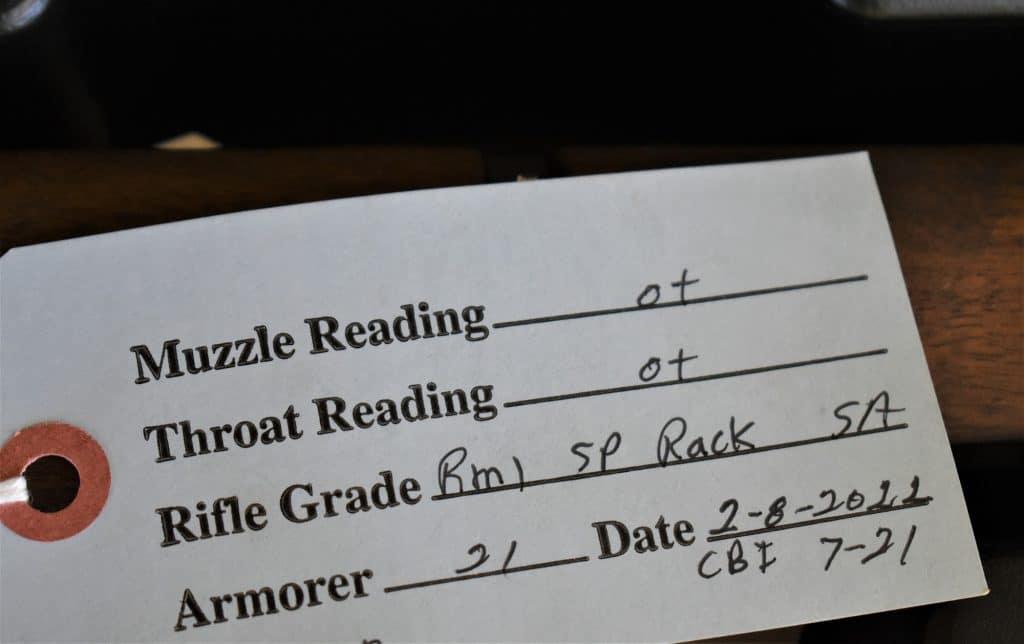
As of October 2022, the CMP had Expert grade M1 Garands listed for $1,100 with a 6-8 week delivery lead time.
Akin to the old adage of “using every piece of the buffalo,” the CMP doesn’t throw away anything from their M-1s. If the wood furniture is too beaten to carry on, it is crafted into pocket knife handles sold through the eStore or desk art.
Stripped bolts and small parts are likewise sold through the store. As for rifles that are even too far out of spec to be used to fire blanks for VFW units, they have been turned into 30-foot high “Garand Men” at the CMP’s locations.
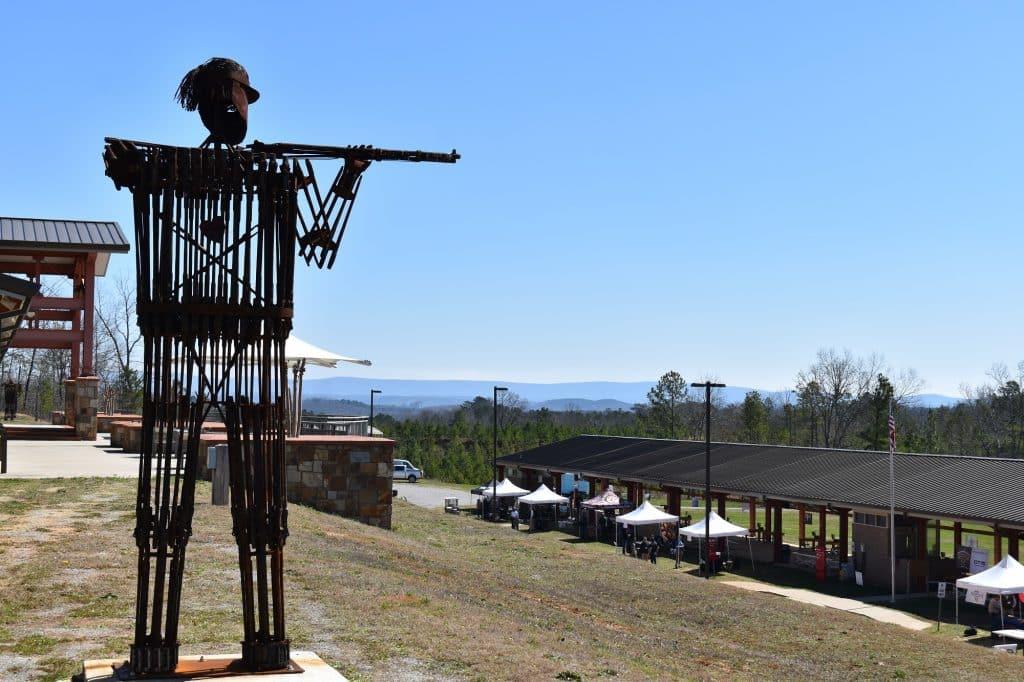
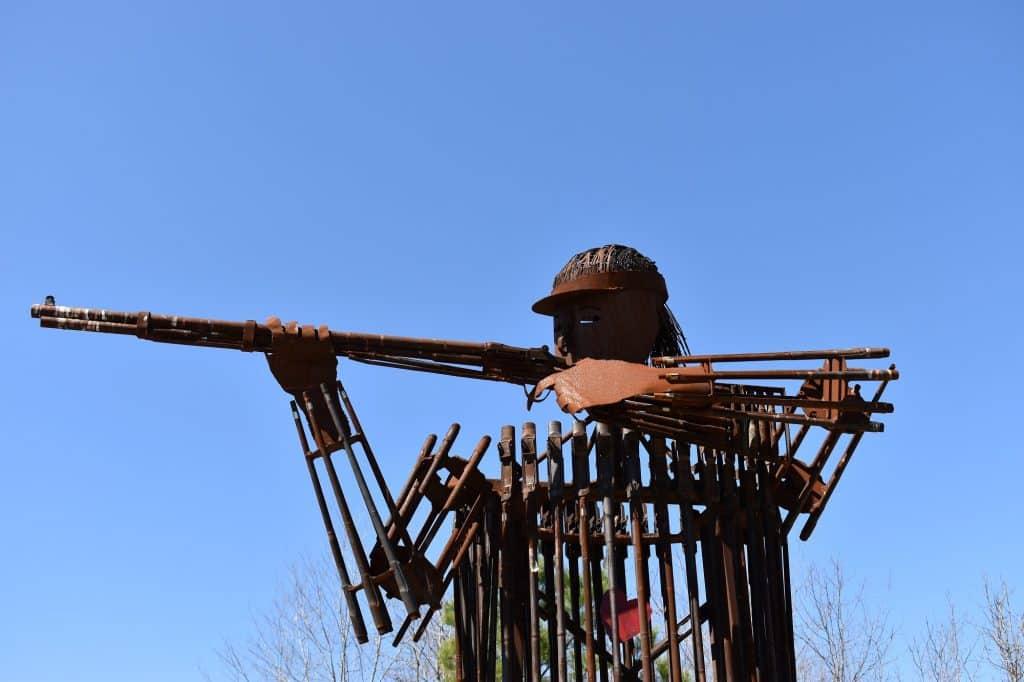
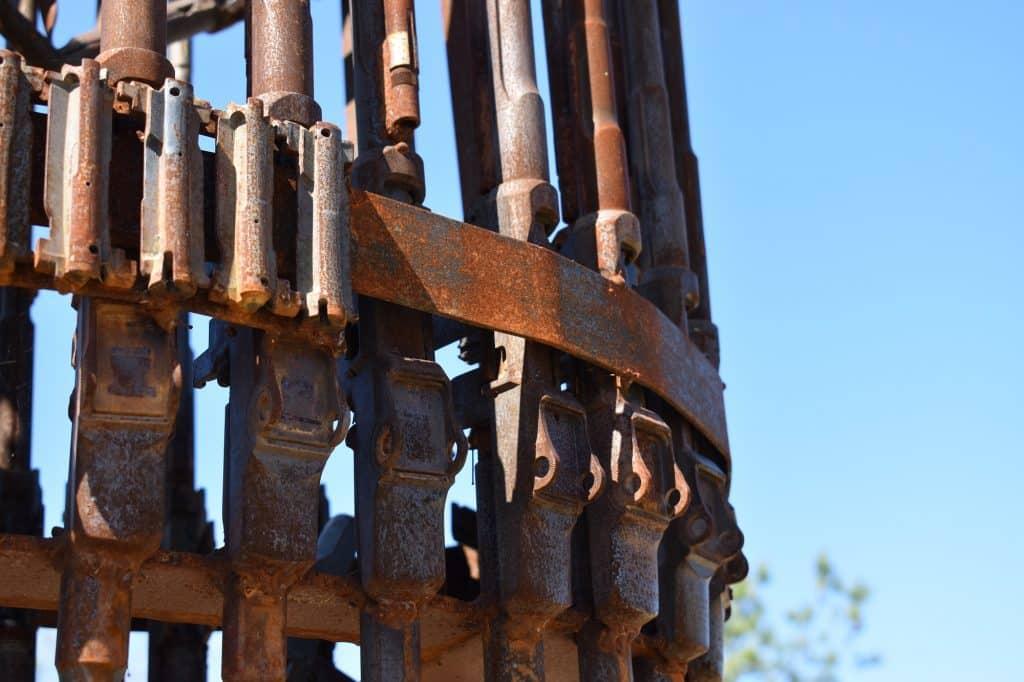
M1911 Program
One of the biggest boondoggles has been the Army’s repeated attempt at getting rid of its M1911 .45 ACP pistols. With over 2 million made, the classic “Government Issue” pistol was the staple of American fighting men in both world wars as well as Korea and Vietnam.
The Army, after trying and failing in the 1950s and 60s to replace the old warhorse with a more compact 9mm that held more ammunition, finally managed to pull it off in 1985 with the adoption of the M9 Beretta. By then, even the newest of the M1911s in stock had been manufactured and delivered in 1945, making them downright elderly.
Nonetheless, the military still used the single-action .45 throughout the Cold War and into the Global War on Terror, as the gun remained much-loved by commando types– Special Forces A-teams were still carrying it in Afghanistan post-9/11.
However, even SOCOM eventually put the old M1911 out to pasture, replaced by easier-to-maintain Glocks and SIGs. This left the Army in 2016 with about 100,000 guns still left in storage at Anniston Army Depot, with a cost of about $1.5 million a year to keep clean and dry.
This led to a push from the Congressman who represented the Anniston area to donate the guns to CMP for sale and, by 2018, Congress had approved the transfer at a rate of 10,000 pistols per year provided the organization carefully secured the guns (including building a $700,000 handgun vault) and meticulously managed how they were sold– more on the latter in a minute.
This led to a lottery system that the CMP has used since late 2018 to sell the M1911s portioned out to the organization by the Army. The process is simple, with the applicant filling out an eight-page packet similar to that for an M1 Garand and mailing it to their Anniston office.
Once approved, the CMP will email the applicant a number randomly assigned in the current year’s drawing and then the fun begins with about 800 or so pistols shipped out each month. When the lucky applicant’s number comes up, they will get a call from a usually very chipper young woman with the CMP and be told what grades are available at the time, ranging from Rack grade ($1,050) to Field grade ($1,150) to Service grade ($1,250) of which all will be functional, historic guns.
There is also a Range grade for $1,100 that has been modified– usually by Army unit armorers while in service– to contain a lot of commercial aftermarket parts. Like the Garands sold through CMP, the M1911s will typically have been rebuilt a time or two either by unit armorers or Army arsenals since 1945 and usually will have mix-matched parts, for instance with a Colt-marked slide, Ithaca barrel, and Remington frame.
During that call, you can ask for a particular manufacturer (Colt, Ithaca, etc.) and may get lucky, if they have it in stock. Then, after paying, it will arrive at your FFL in a matter of days, complete with a single magazine and a reprint of the Army field manual on the gun, often all inside a very nice CMP-branded Pelican case.
A few things to be aware of is that, unlike the M1 Garand program, CMP is required to ship the M1911s to an FFL, so the transaction is much like buying an out-of-state gun from Gunbroker, Armslist, or Guns.com in that respect. Further, as the packet is only entered after the CMP does a NICS background check on the buyer, at least two such checks are done. This is part of the extra scrutiny that the Army wanted CMP to agree to before sending over the pistols.
There have been two rounds of lotteries done thus far, with a bit over 20,000 guns sold, and CMP just recently completed the enrollment period for the third round at the end of September 2022. It is likely the fourth round will occur sometime in late 2023, so stay tuned for that.
Is the price that CMP sets a lot of money for an M1911? Not if you want a legit Army surplus gun it isn’t as such pieces often resell for twice that much. If you want just an inexpensive M1911 GI pistol to bang around at the range, you may be better off with an imported clone such as a Turkish-made Tisas or Philippine-made Rock Island, either of which can typically be had for around $450-$500 but don’t have any history attached.
Ammo & Accessories via CMP
Besides rifle and pistol sales, sending in a packet to the CMP also sets a member up for shopping at the program’s eStore which sells ammunition, bayonets, equipment, targets, tools, and parts, shipped directly to the buyer’s door in most cases.
A lot of it is low-priced (go ahead and try to shop for nice and complete M7 bayonets in M8A1 scabbards elsewhere for $42), rare (stripped WWII Springfield Armory M-1 Garand bolts) or hard-to-find elsewhere due to being a specialty item (such as M-1 Garand breech bore gages) making regular browsing of the eStore a favorite hobby for many.
How to Qualify to Buy From CMP
Buying a rifle such as an M1 Garand or parts and ammo via the CMP’s eStore requires those interested to verify they qualify for the program. This means filling out a six-page packet, most of which is instructions, and mailing it to the CMP’s Anniston office. To qualify, here is what you must prove:
- Citizenship and proof of age– this can usually be taken care of with a photocopy of a valid driver’s license, passport, or state-issued ID. You must be 18 for rifle sales and 21 for pistols.
- Membership in a CMP-affiliated Club– The CMP has some 2,000 shooting clubs that you can be a member of, and all will provide a membership card. One of the easiest to join is the Garand Collector’s Association which has over 20,000 active members and publishes a great journal. Note that for veterans who are members of groups like the American Legion, VFW, and DAV, those all count as clubs as do law enforcement groups such as the Fraternal Order of Police. Active and reserve military, including National Guard, are also considered eligible.
- Proof of marksmanship activity– the CMP looks at this very broadly, and this requirement can be satisfied by current or past military or law enforcement service, completing a shooting course, having a concealed carry permit, or even obtaining a hunter’s ed safety certificate.
- Ability to legally possess a firearm– To make sure they aren’t selling a gun to a felon, or someone otherwise restricted from legally possessing one, the CMP will run a NICS background check when they process your packet. One neat thing is that on rifle sales since CMP has already done the check, they can mail it directly to the buyers’ door in most states.
For the full rules and requirements, check out CMP’s page on the matter — and good luck!
Sign up for our newsletter
Get discounts from top brands and our latest reviews!

